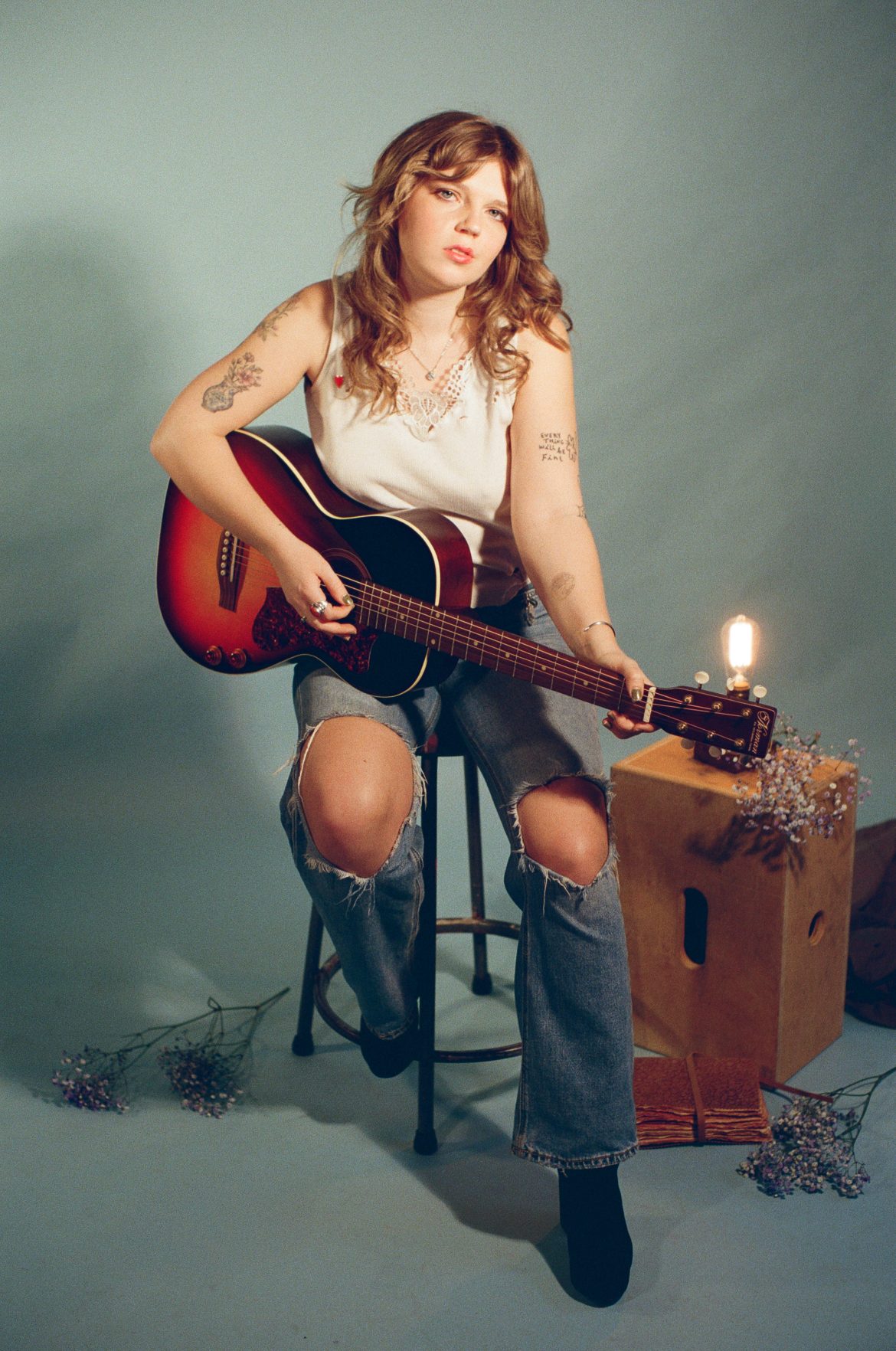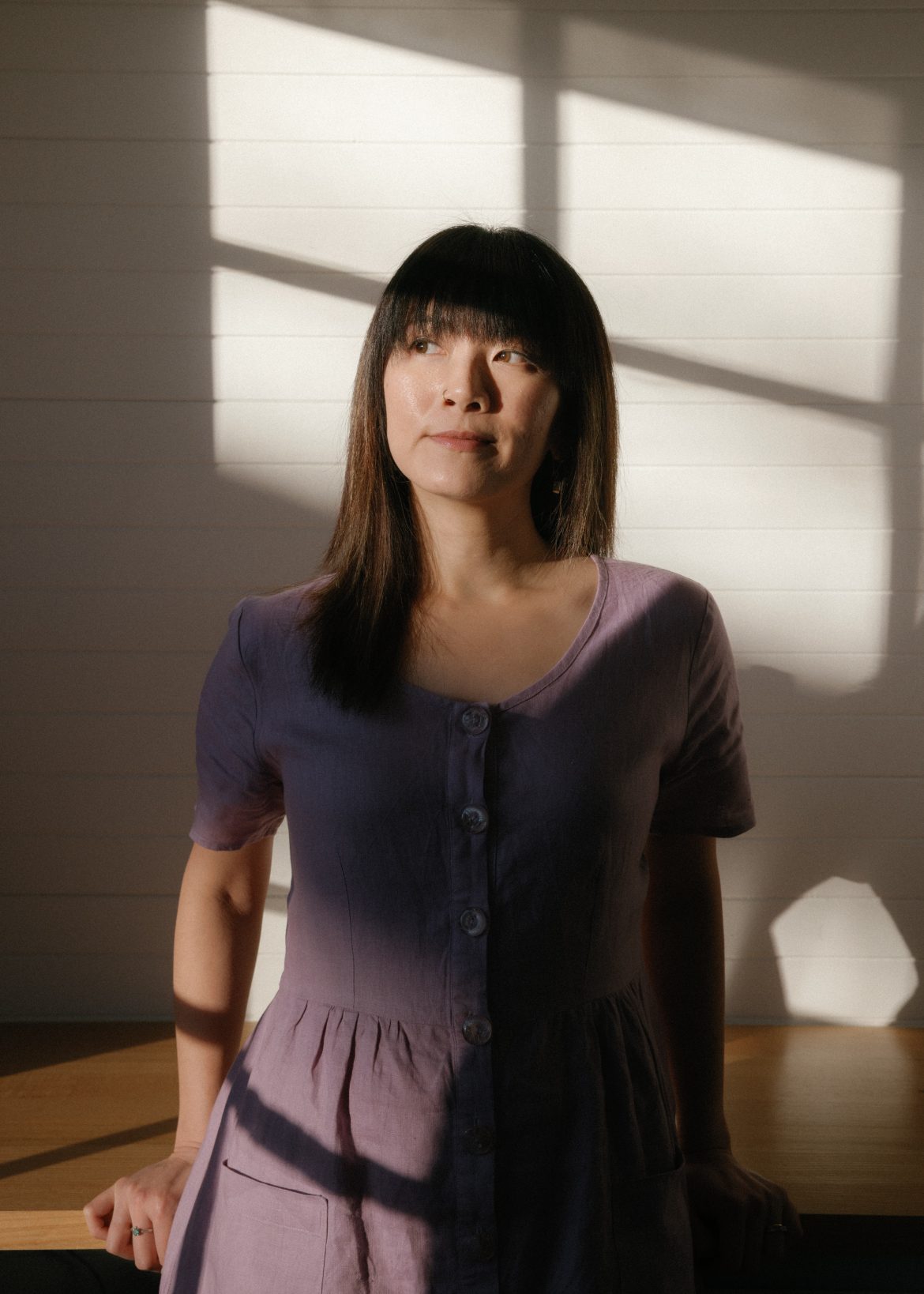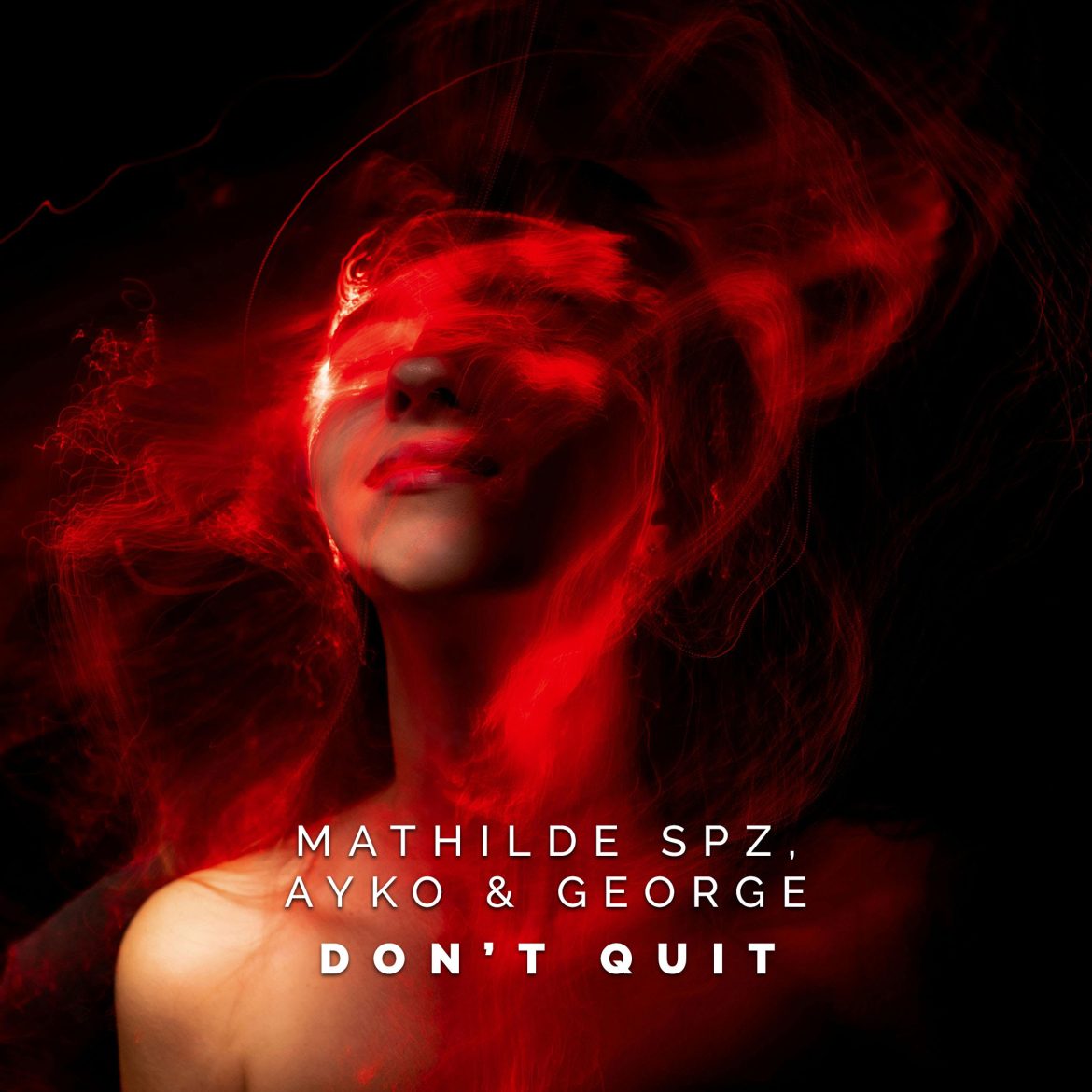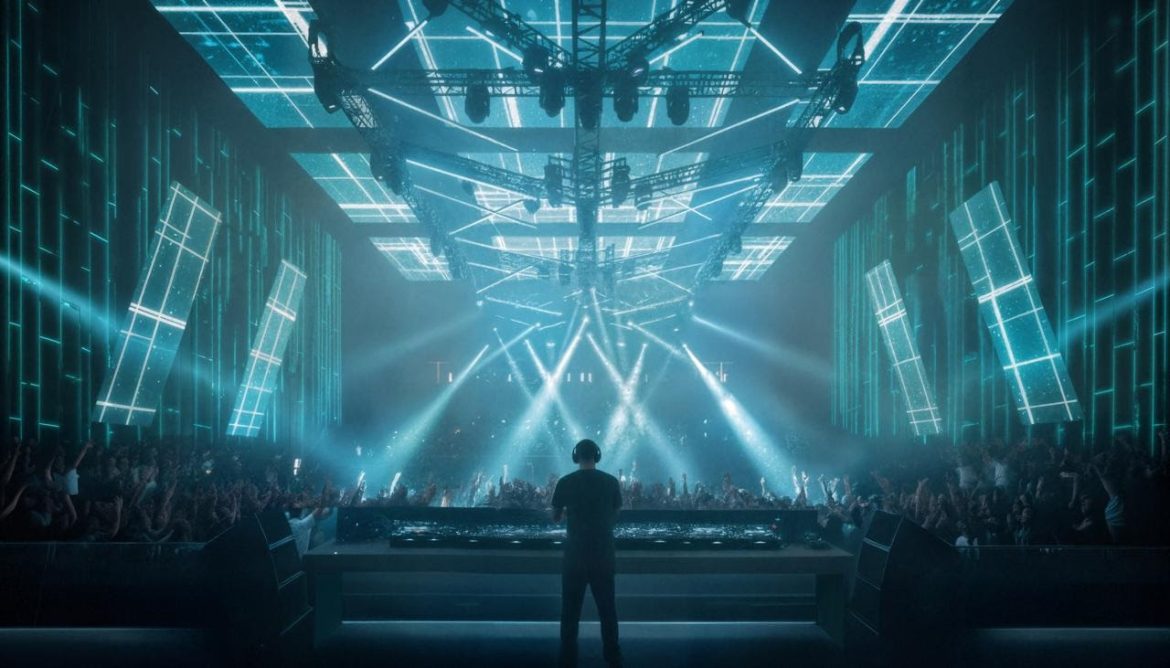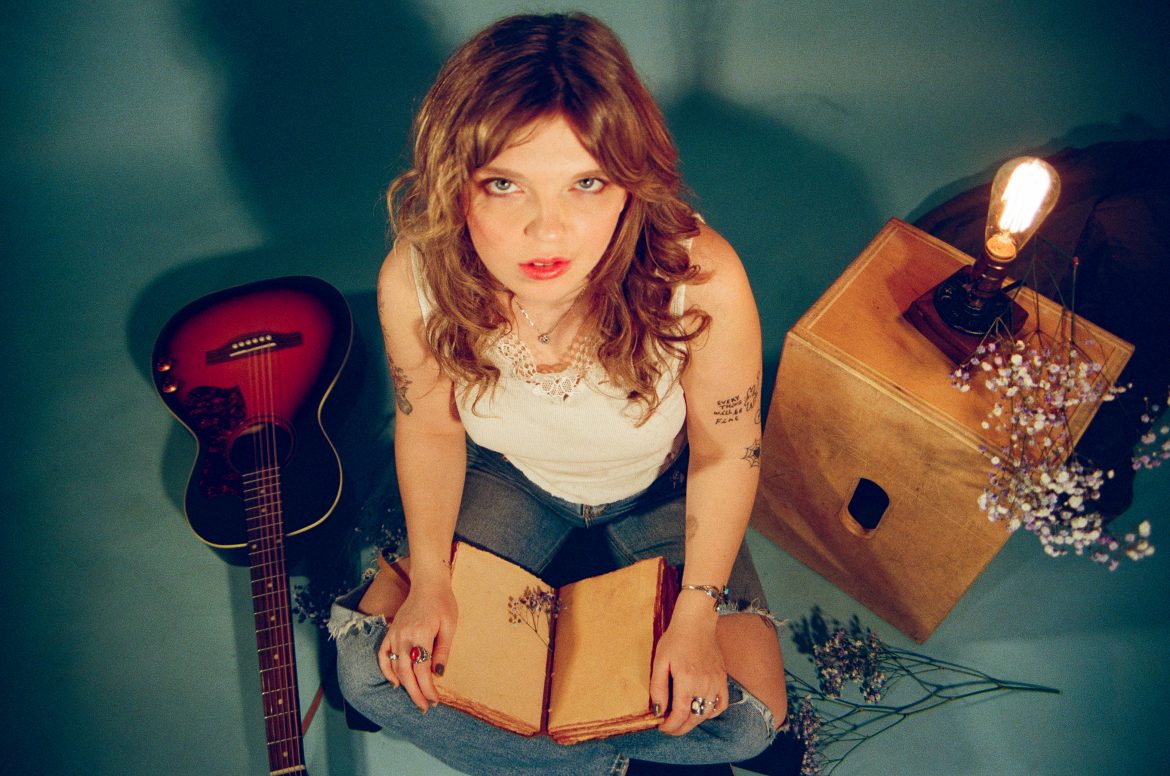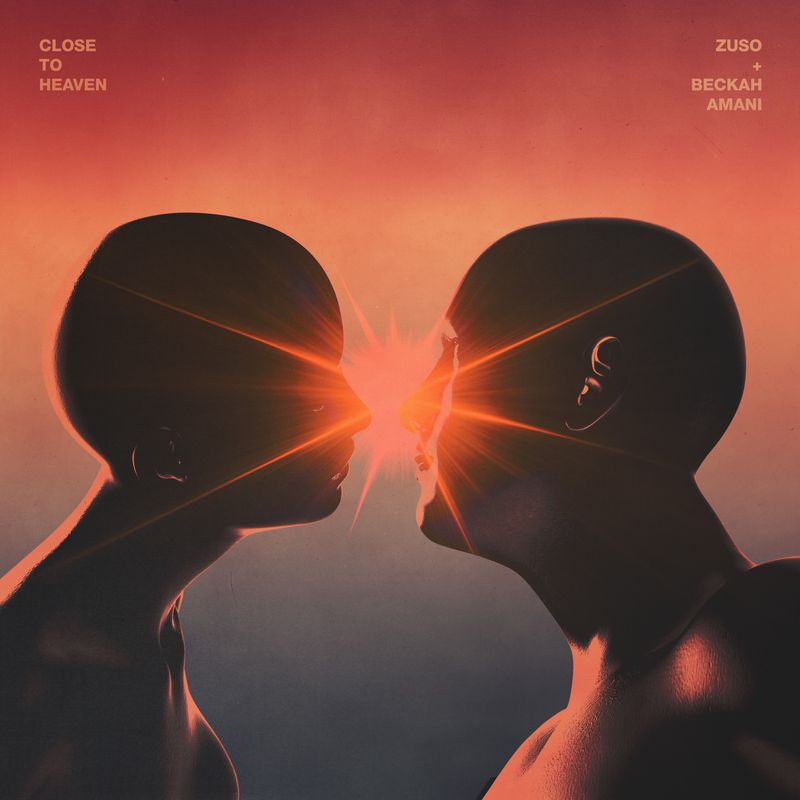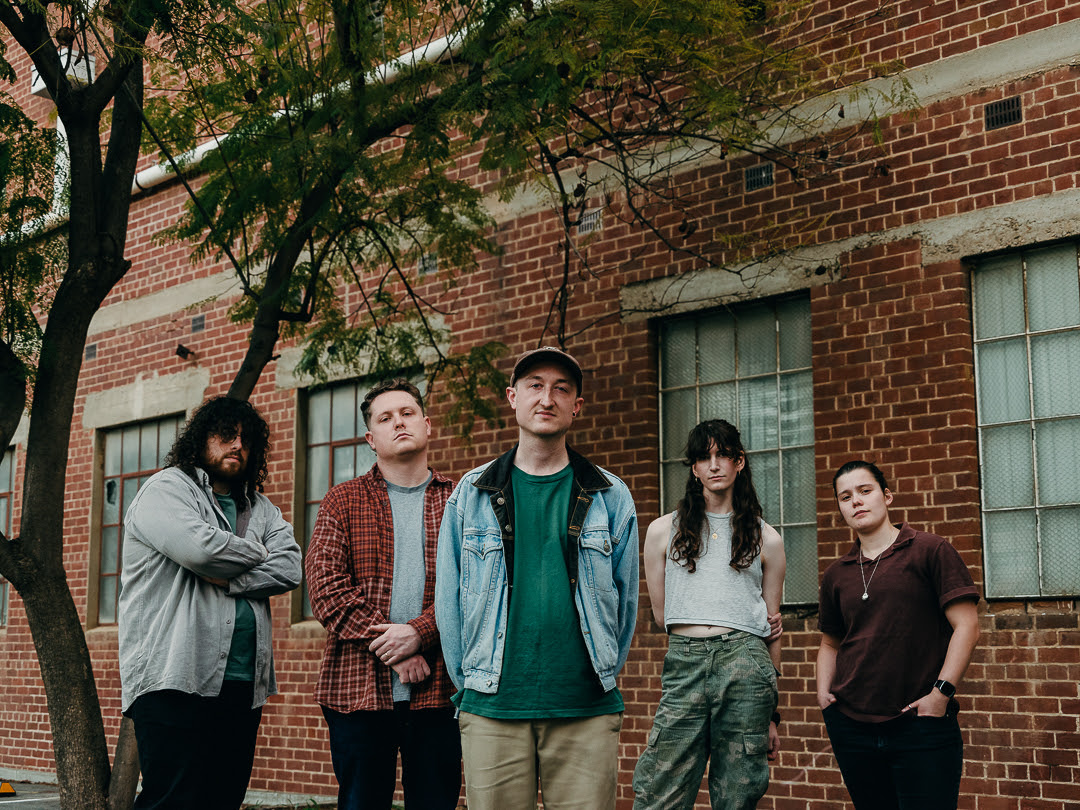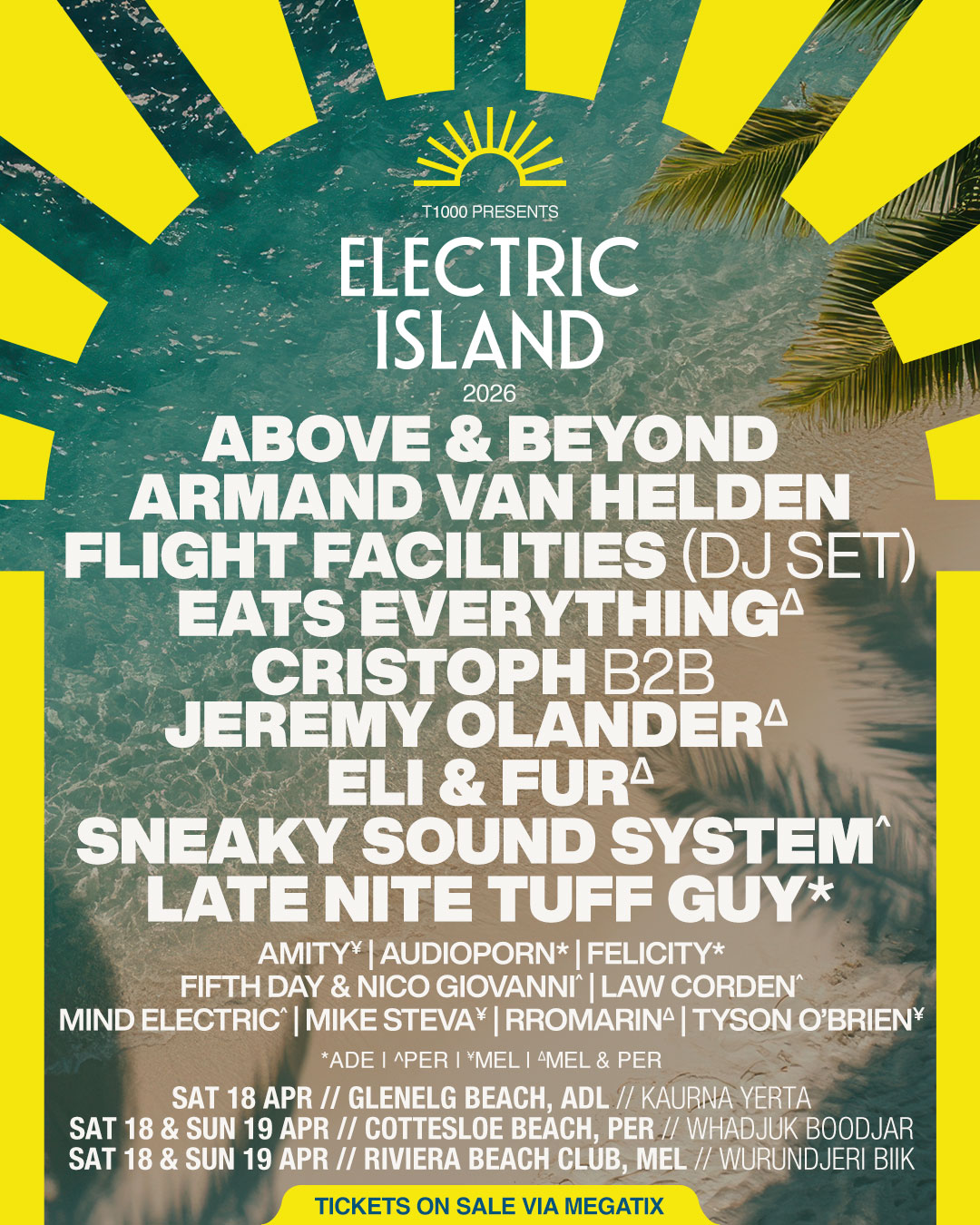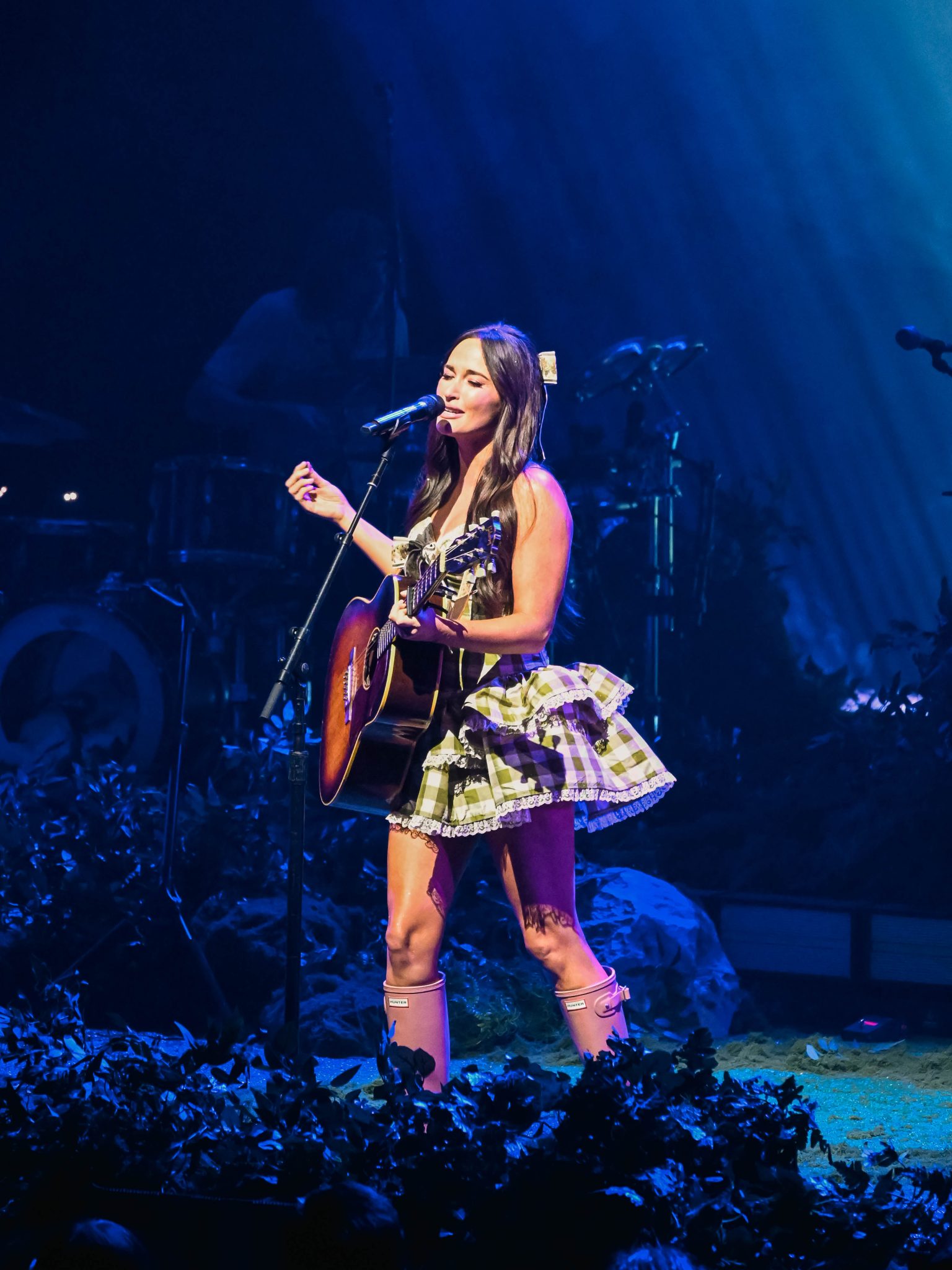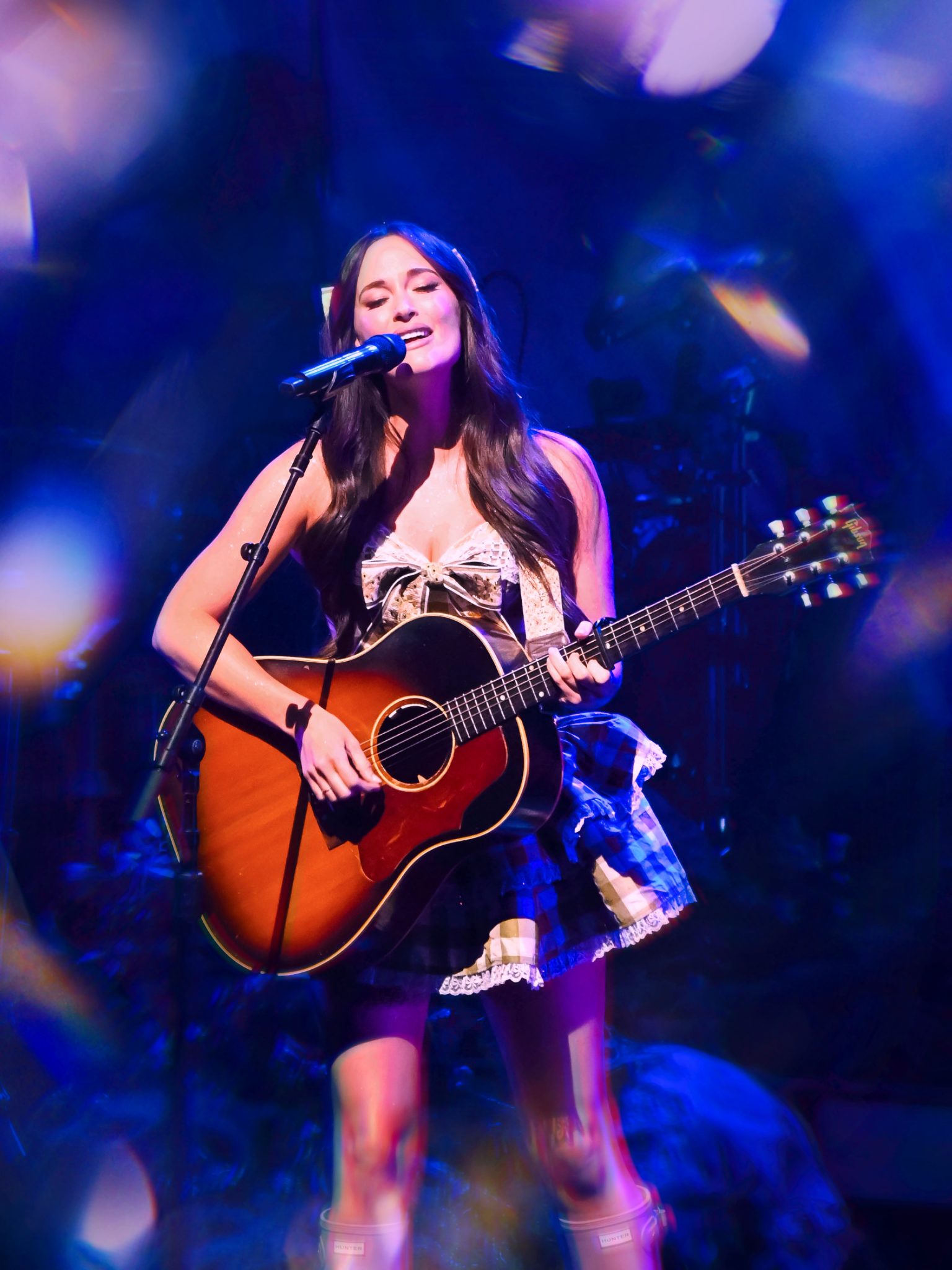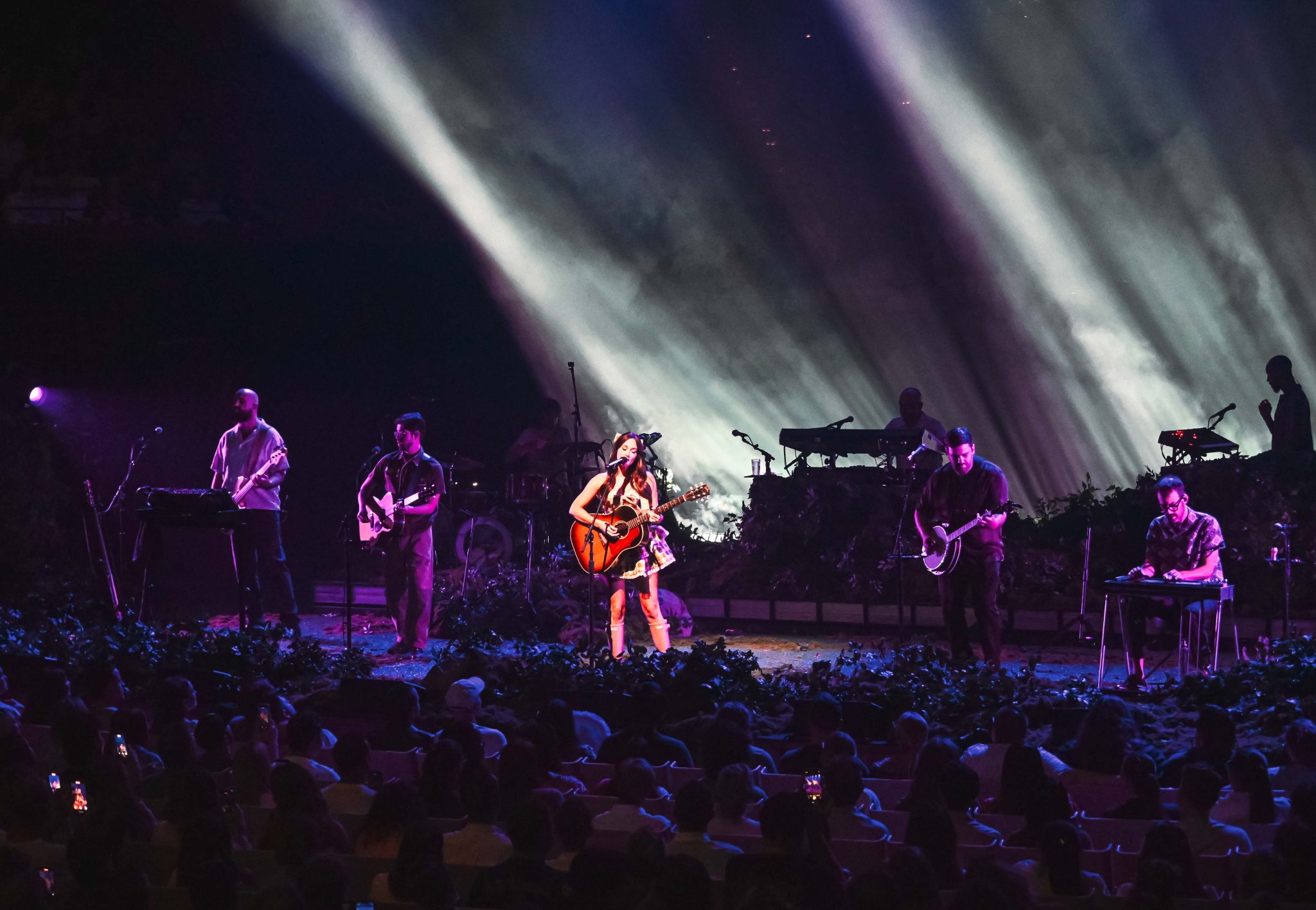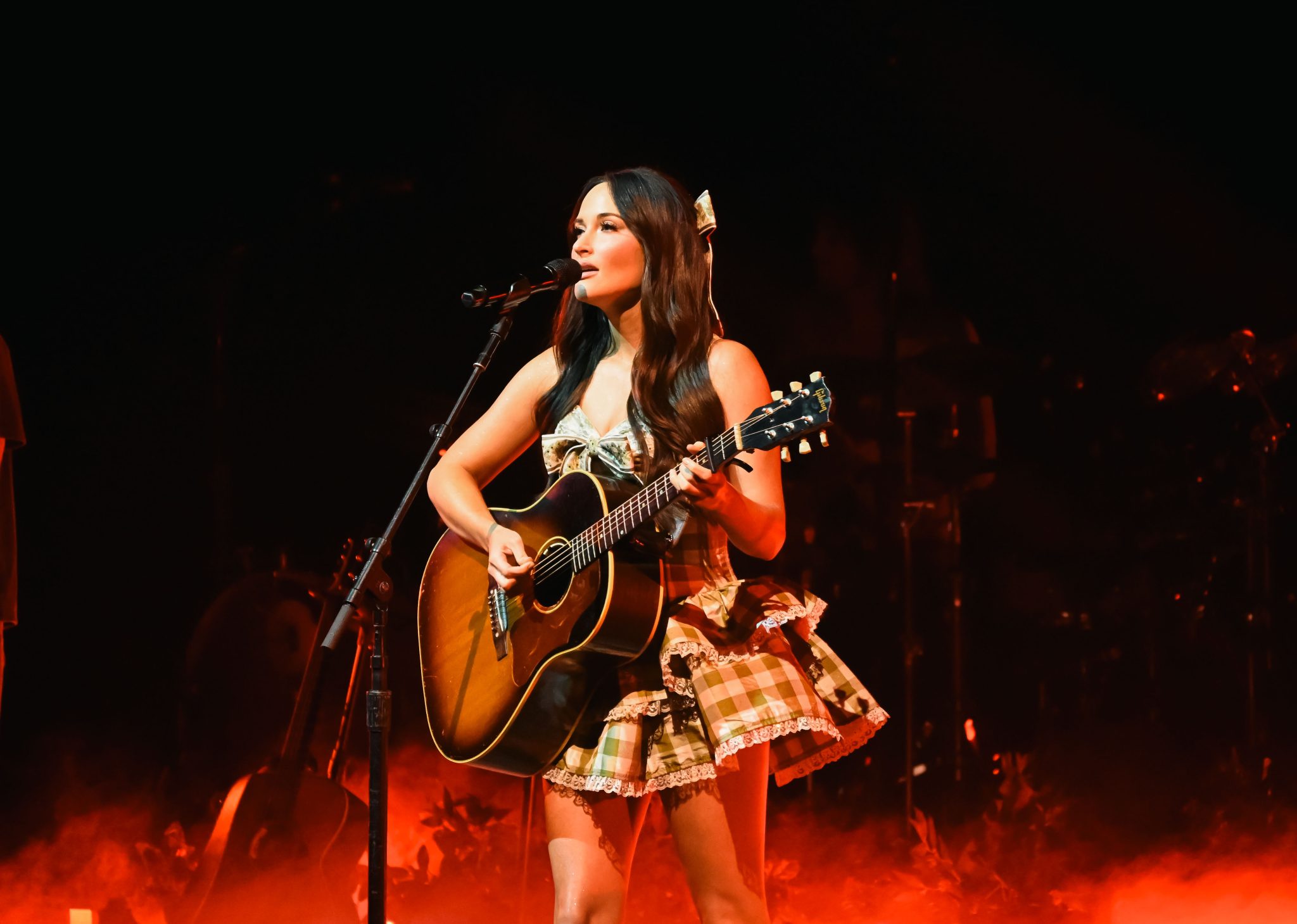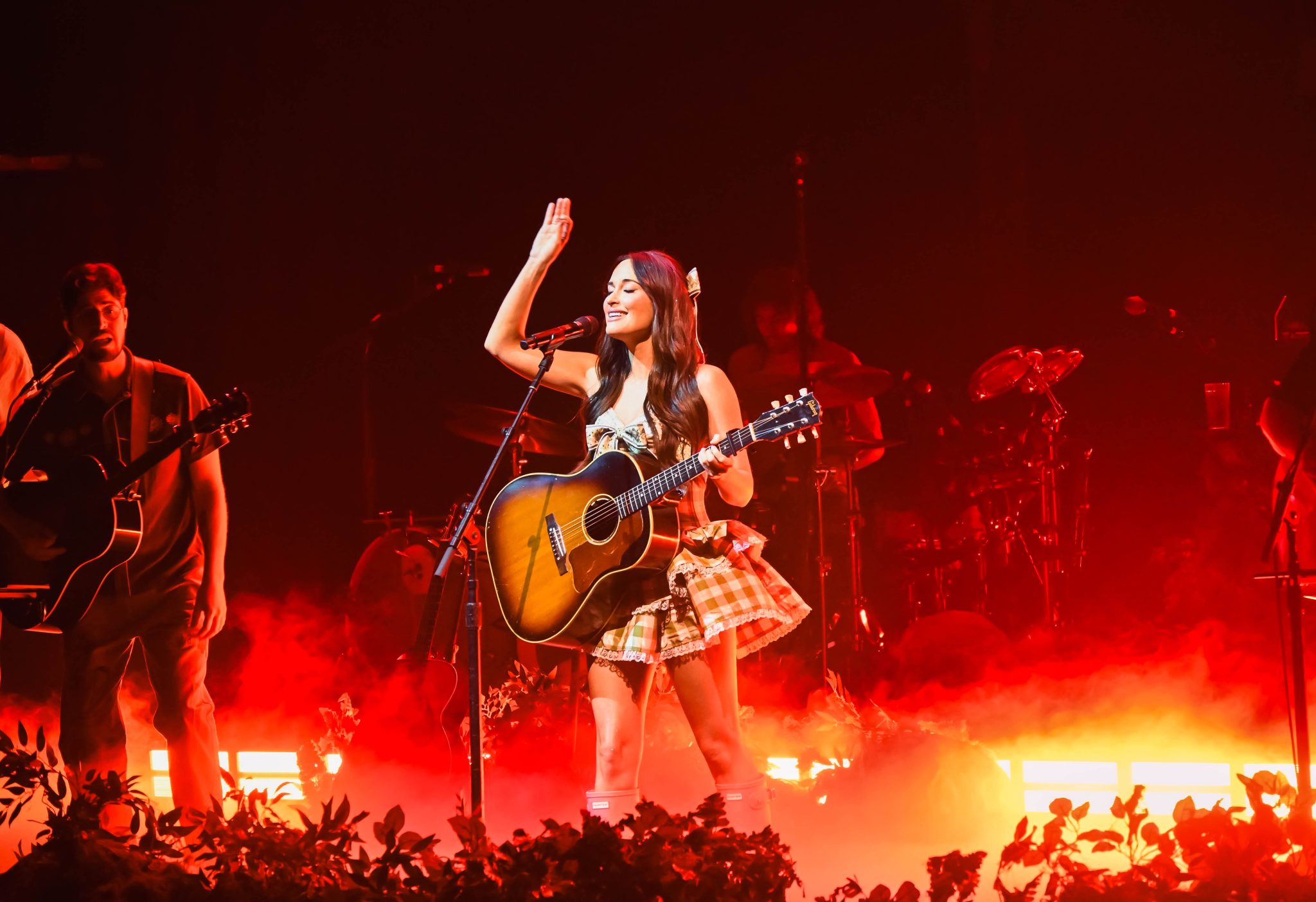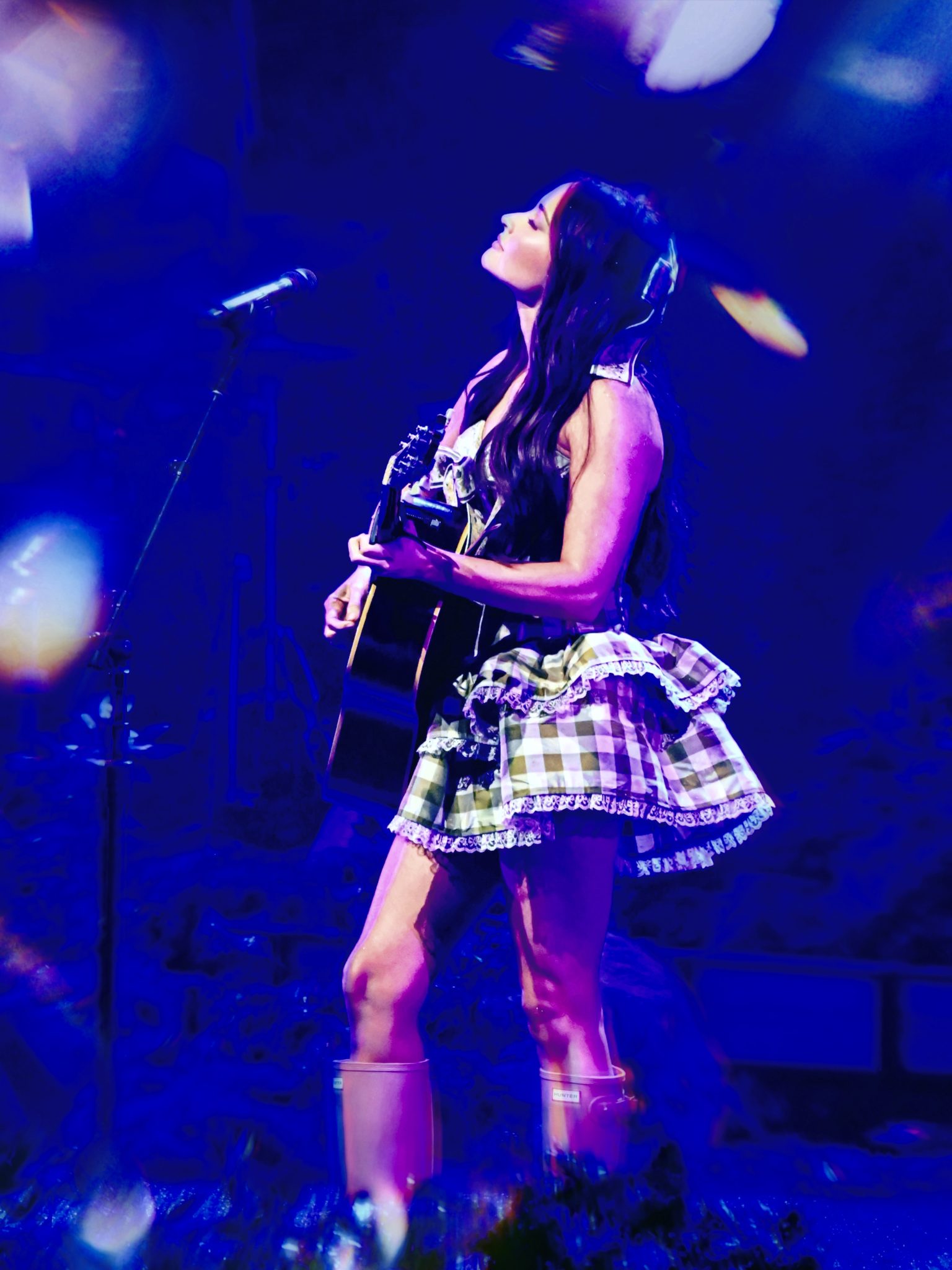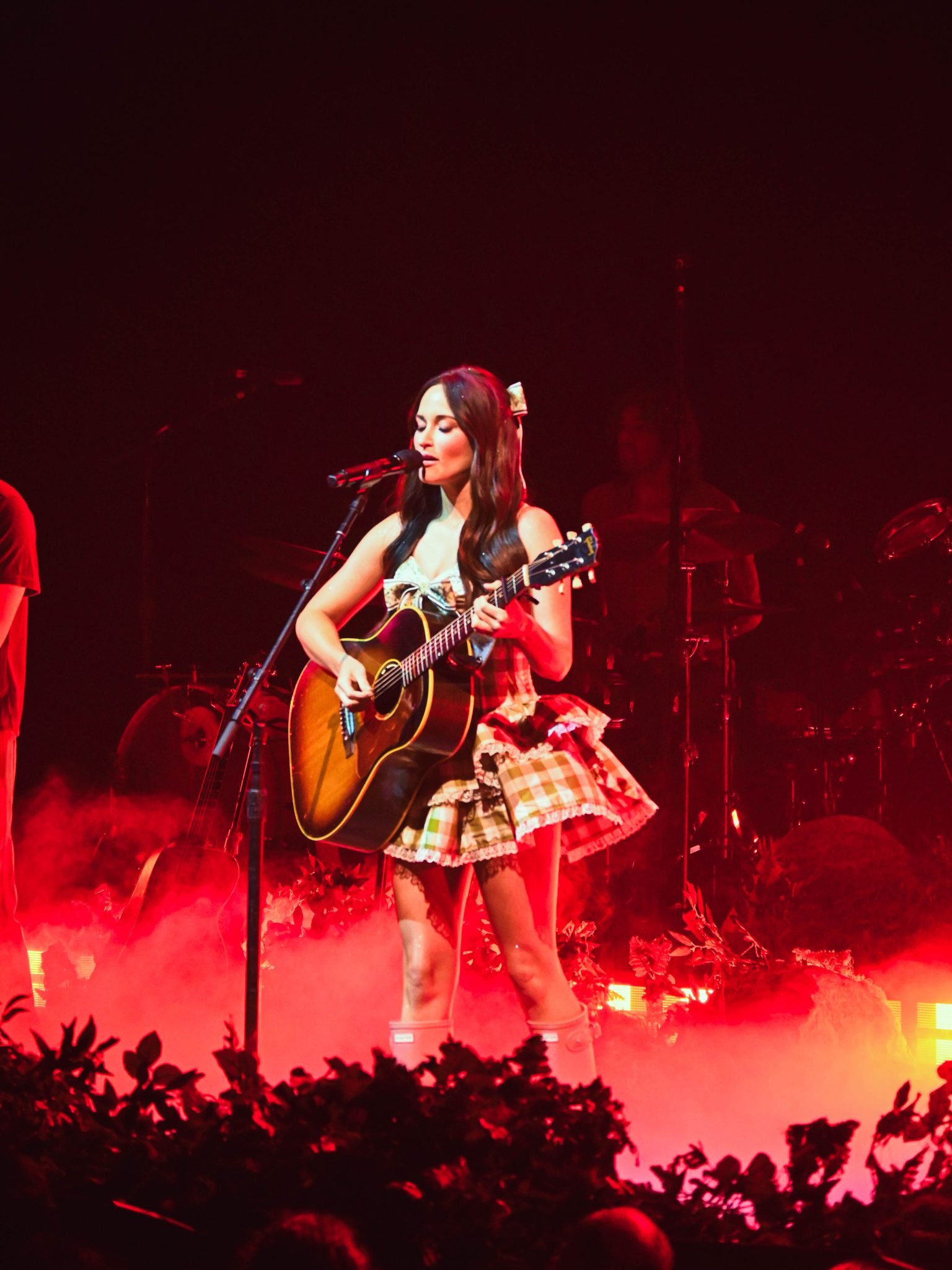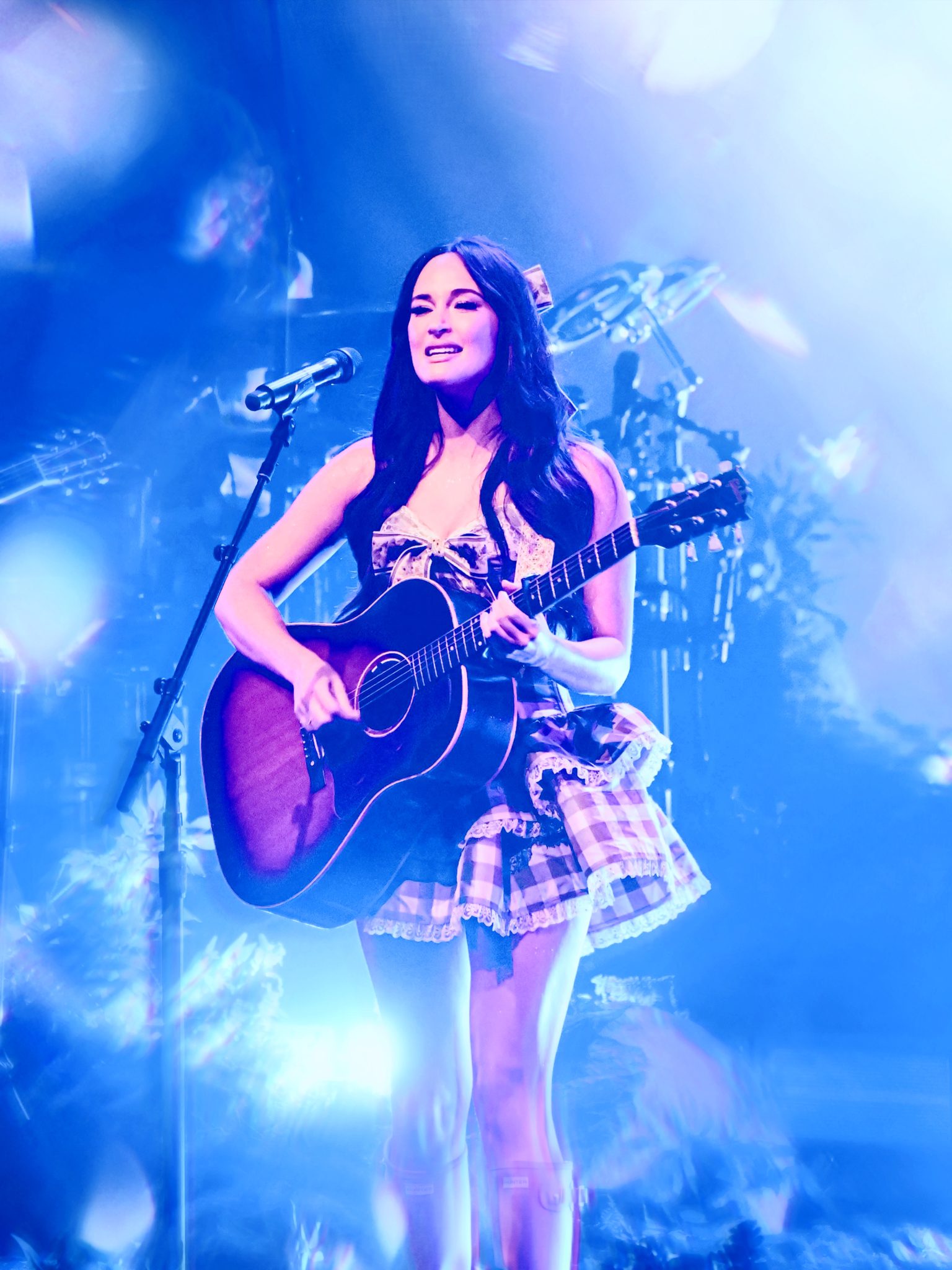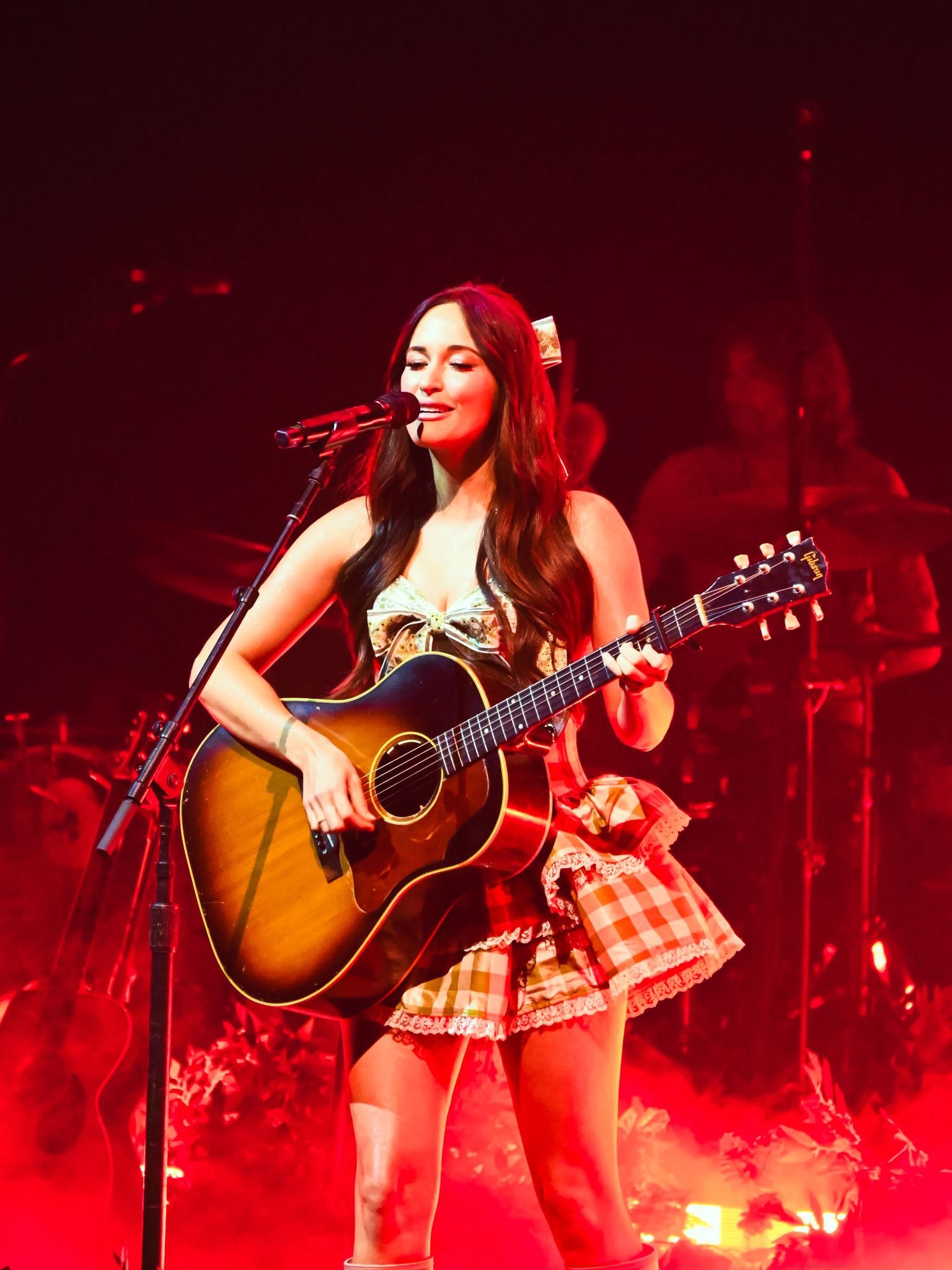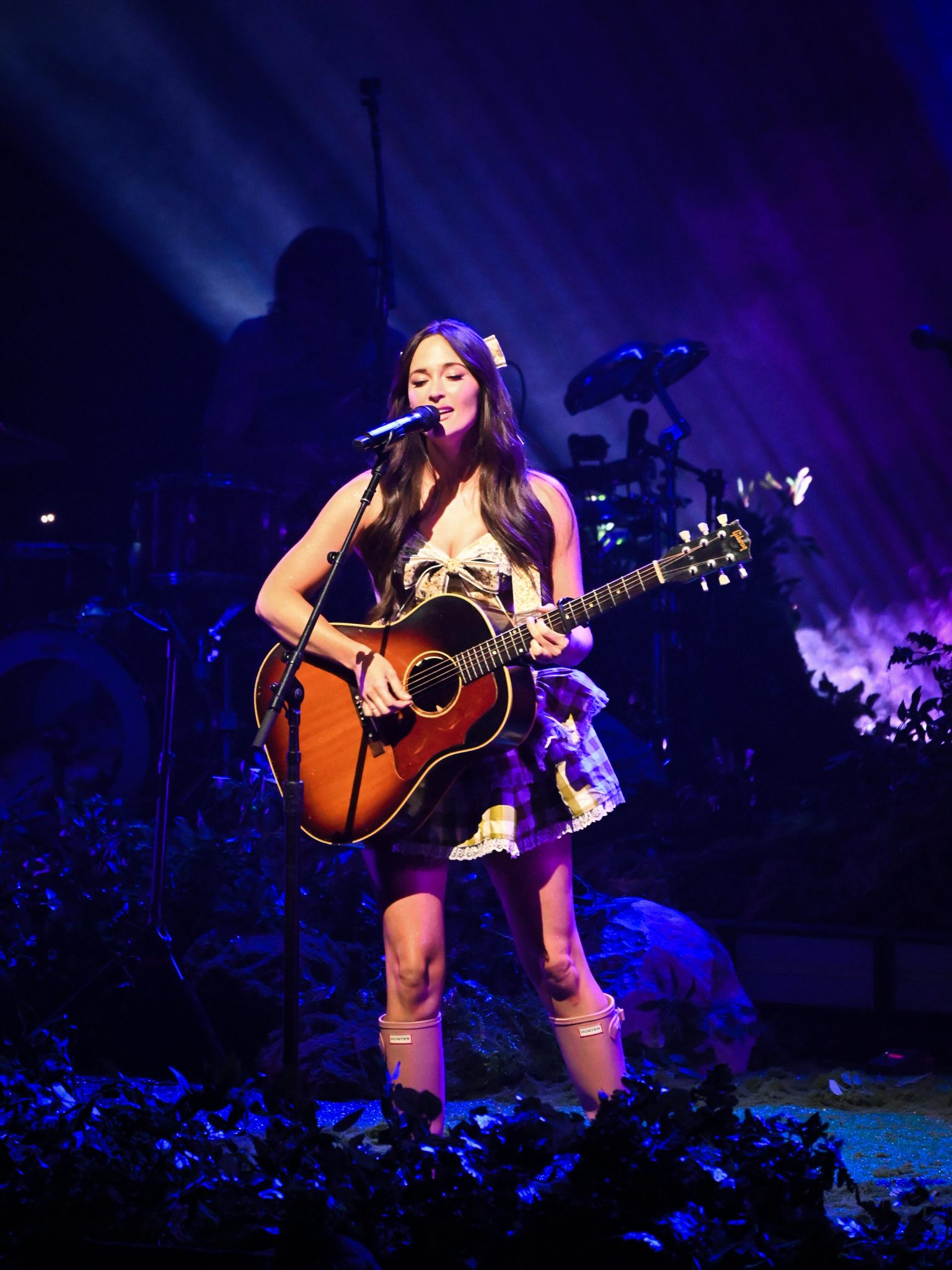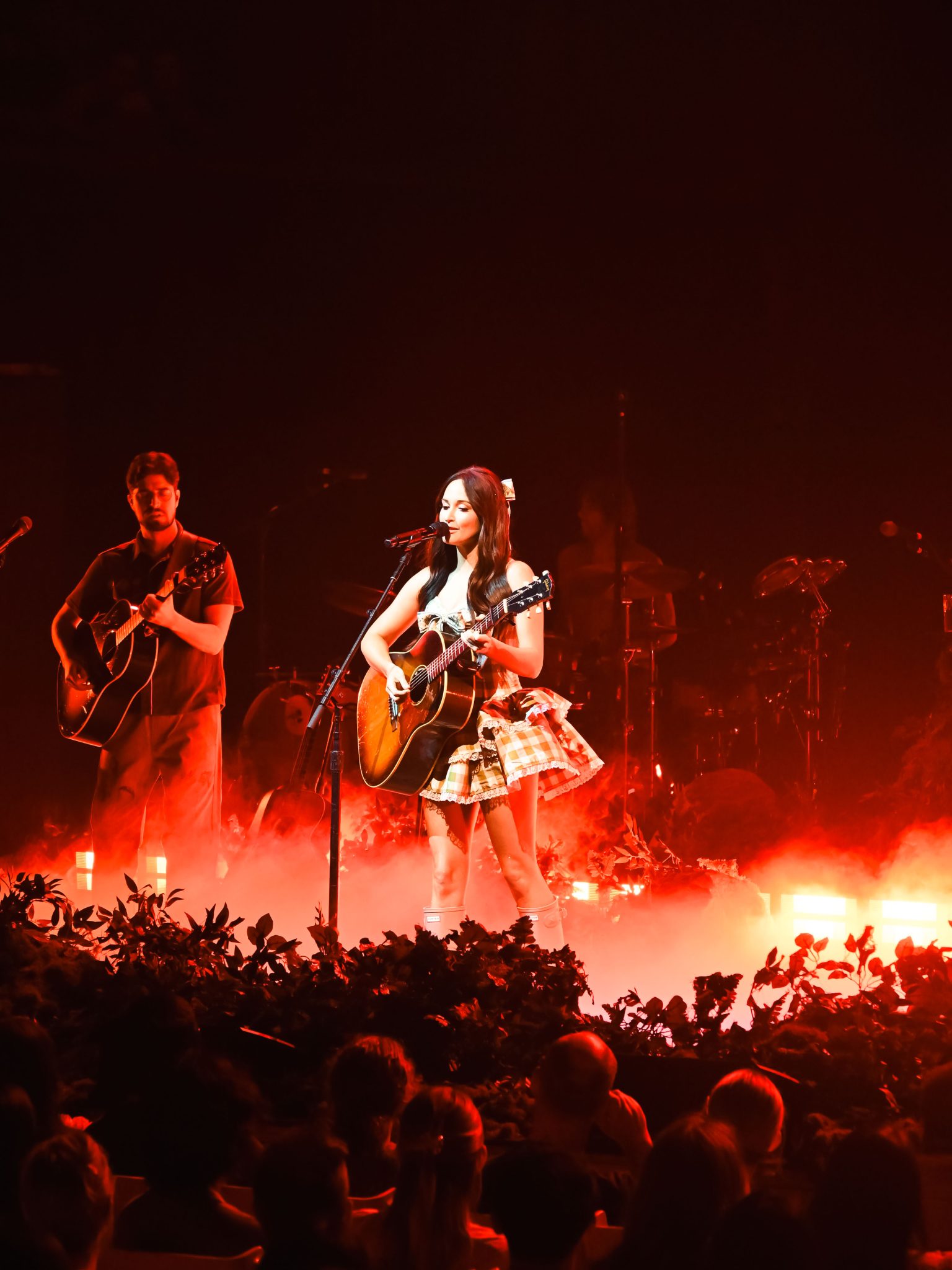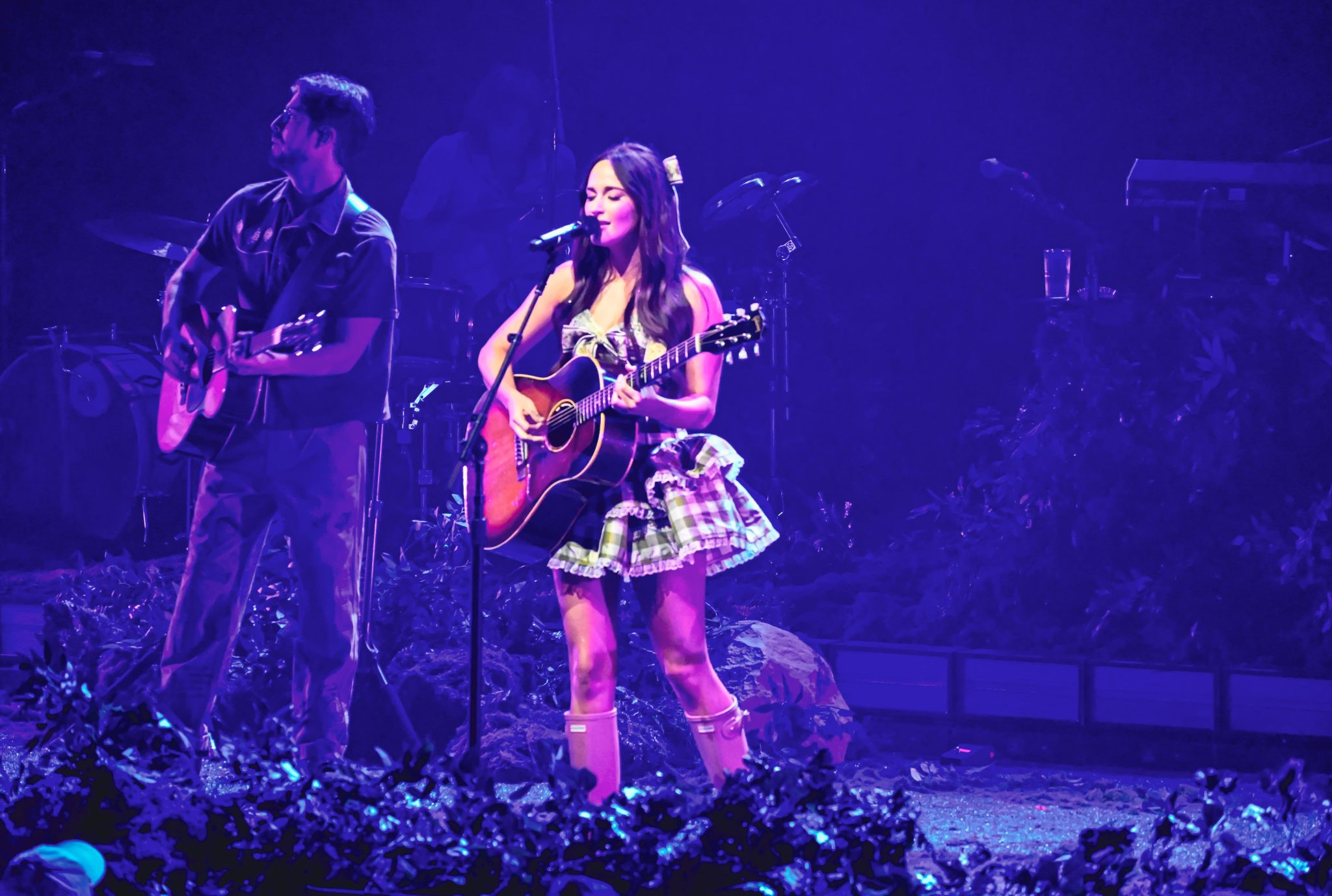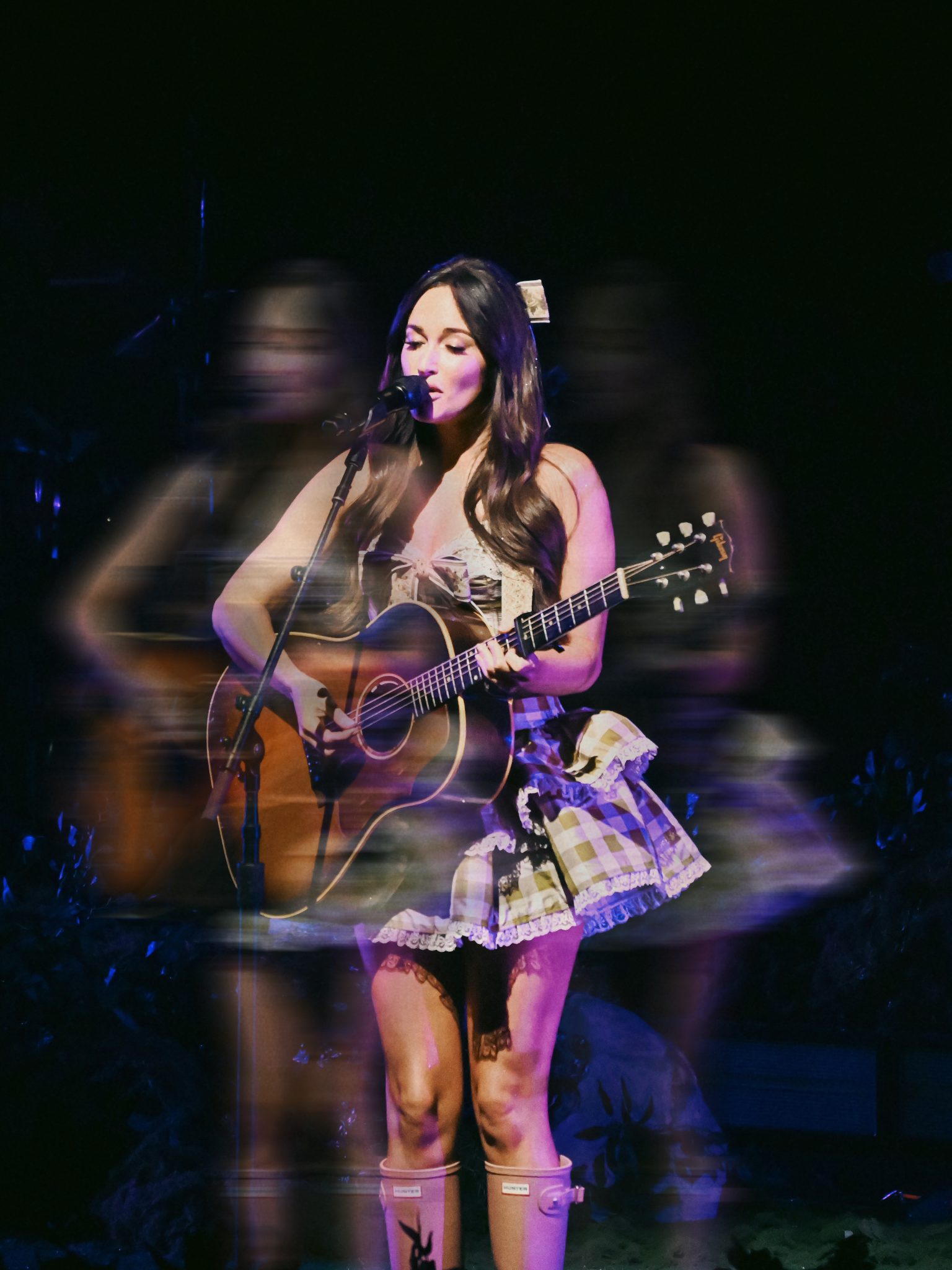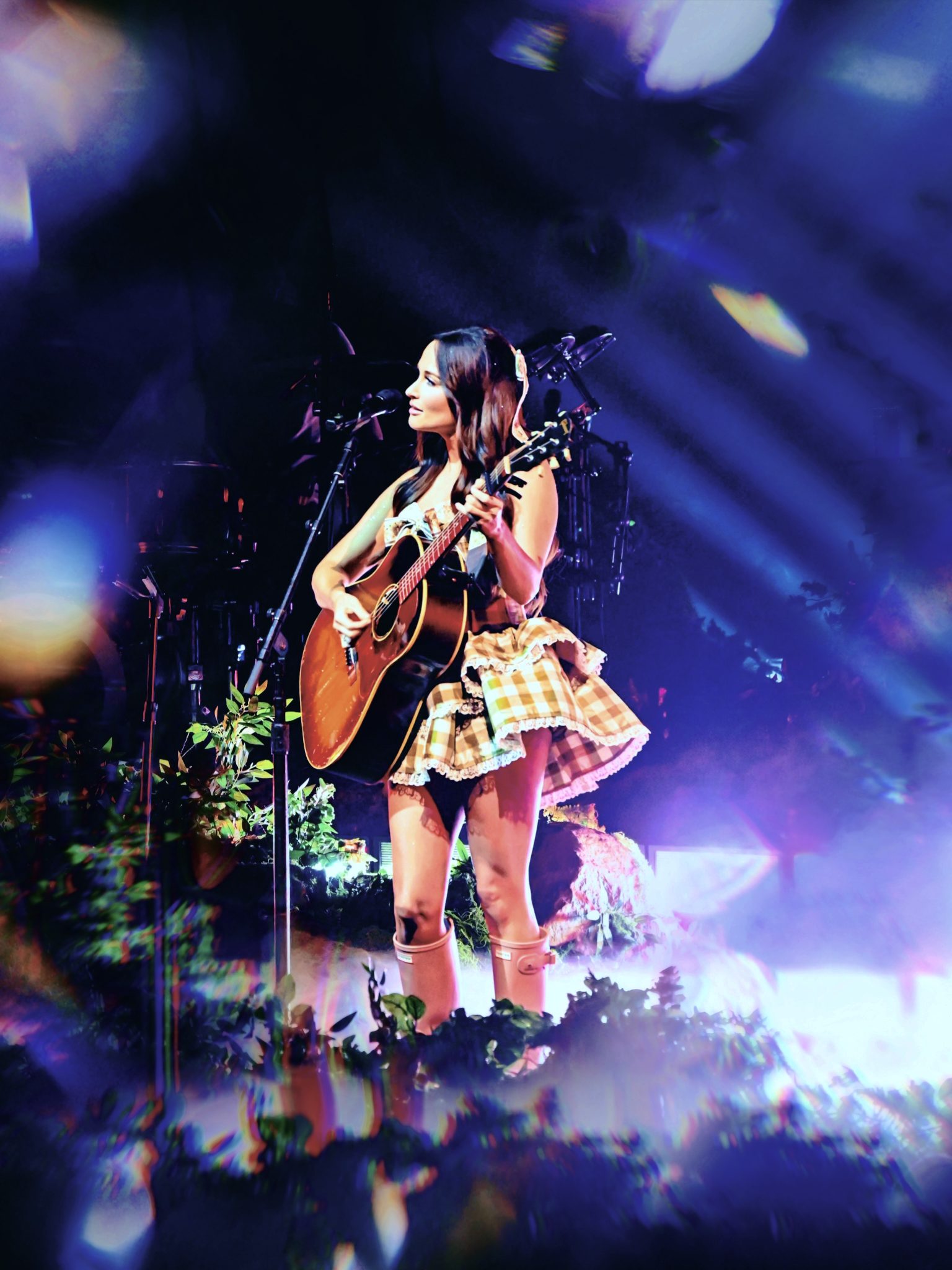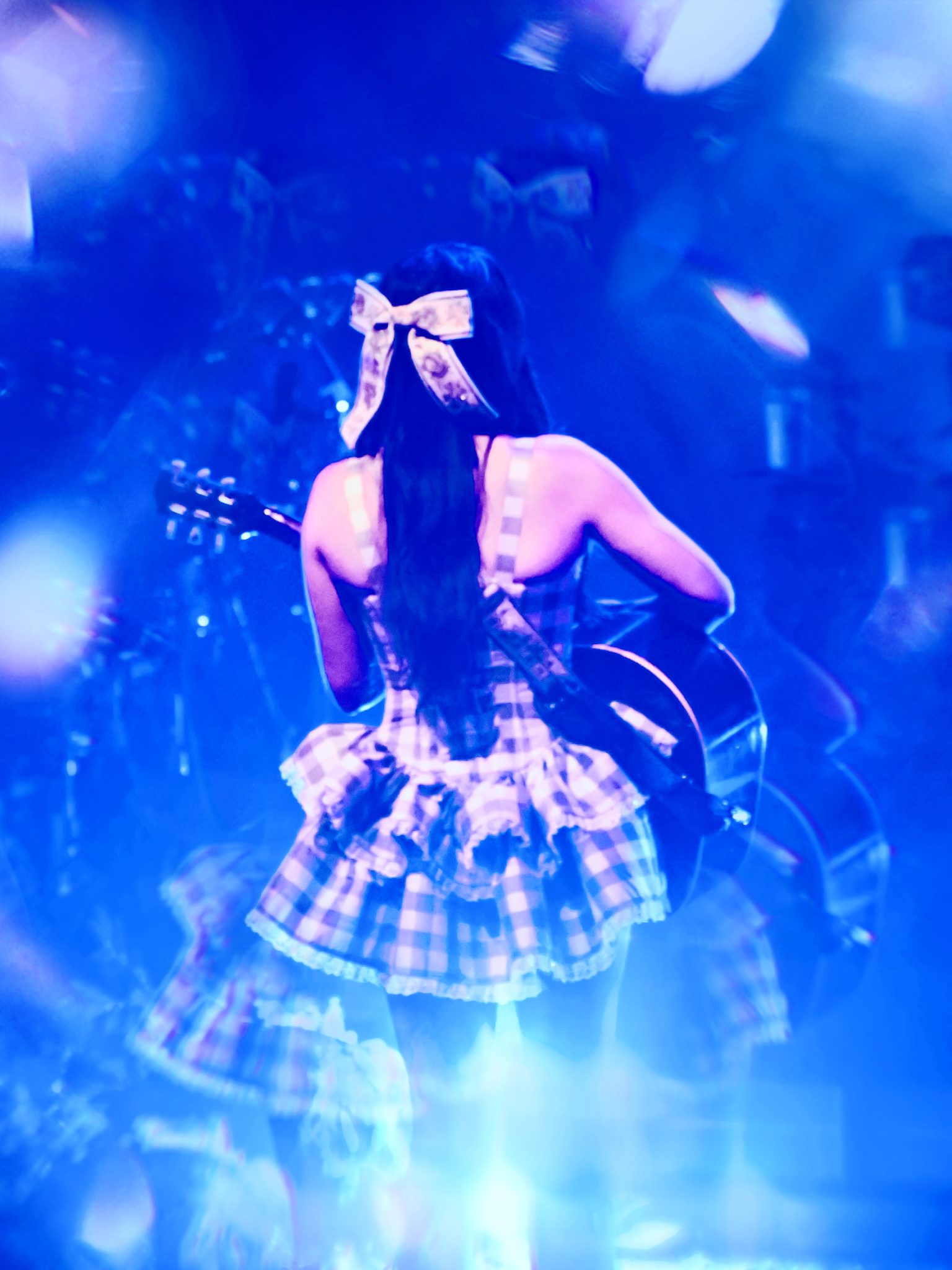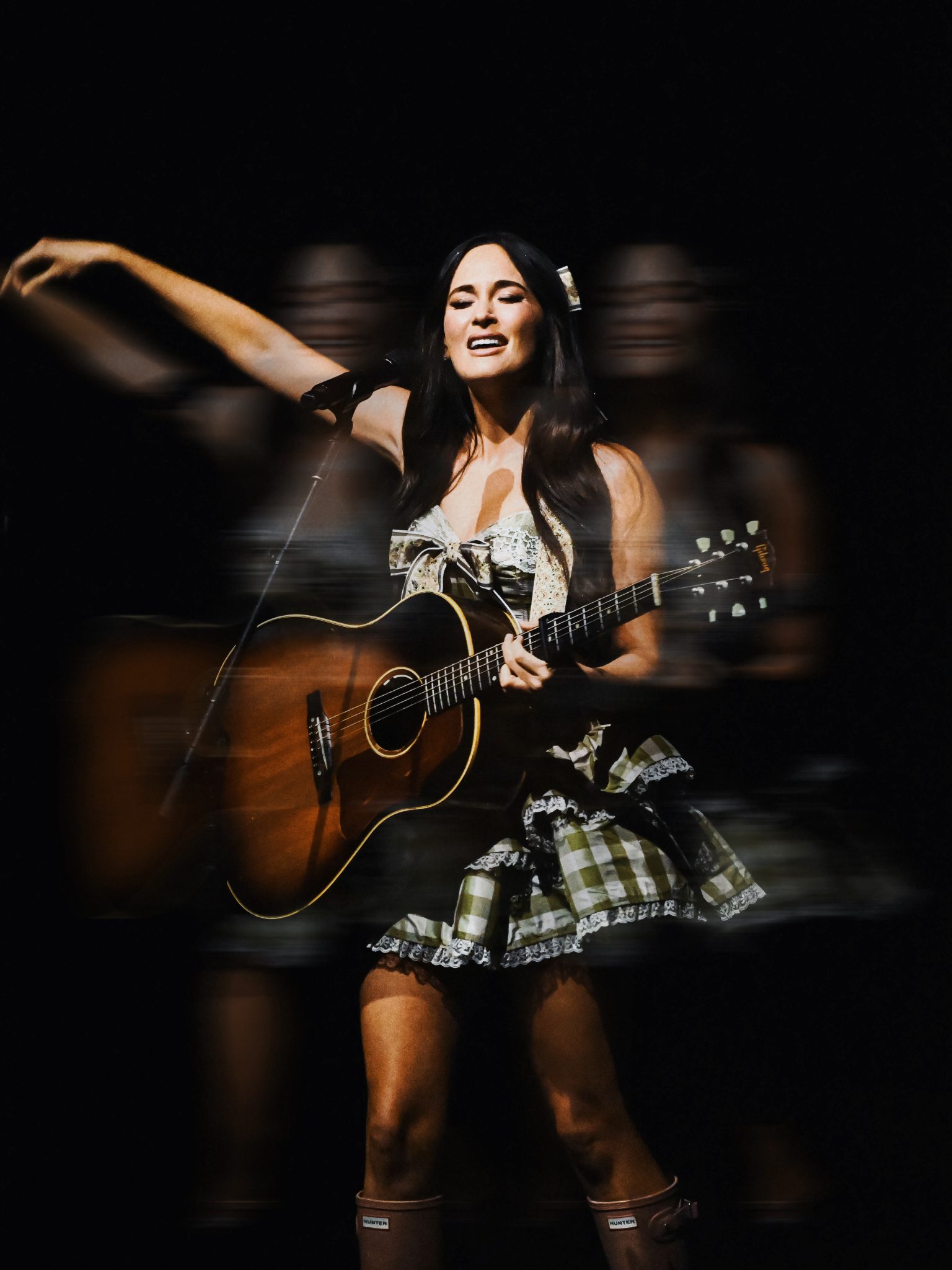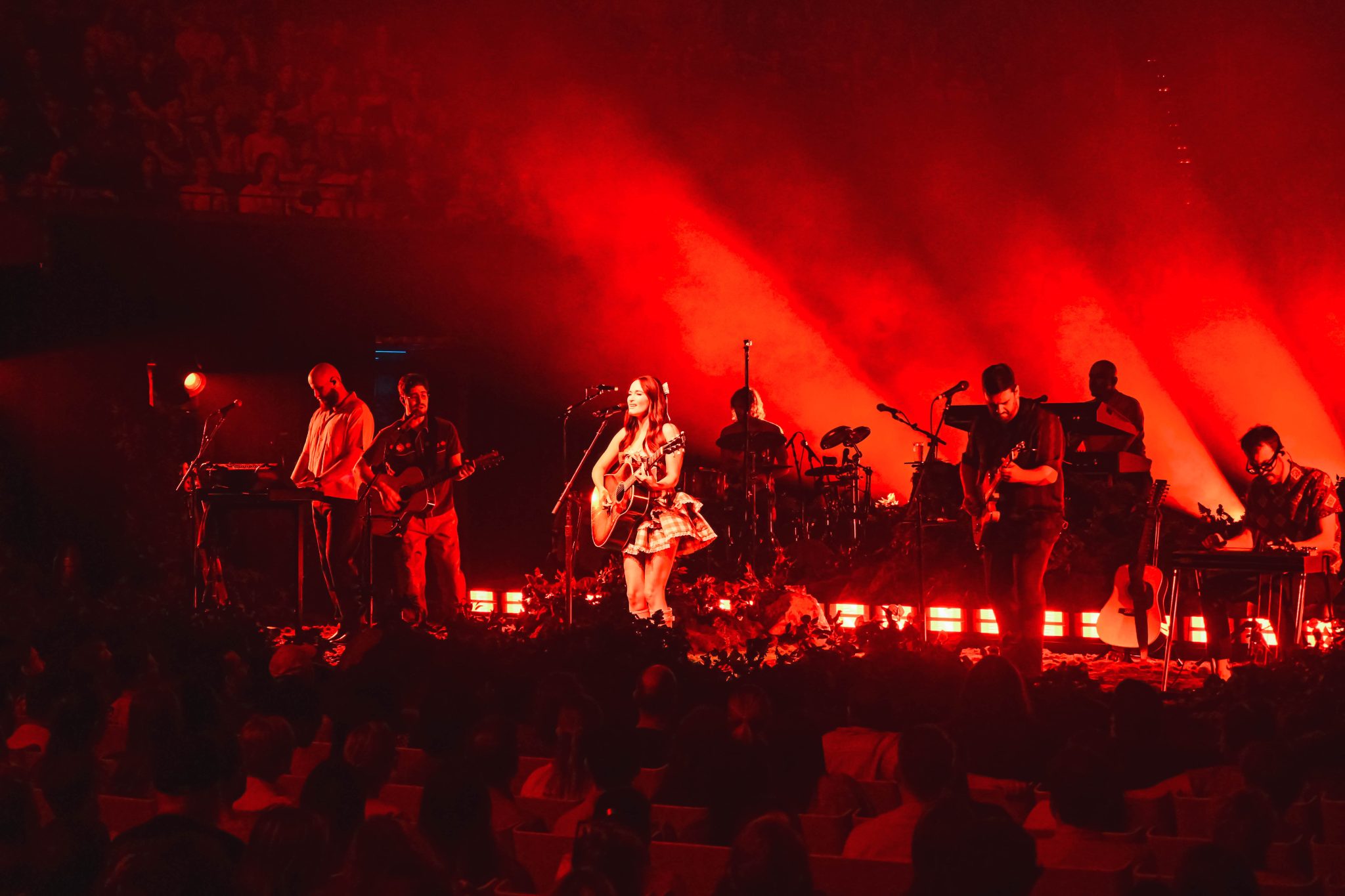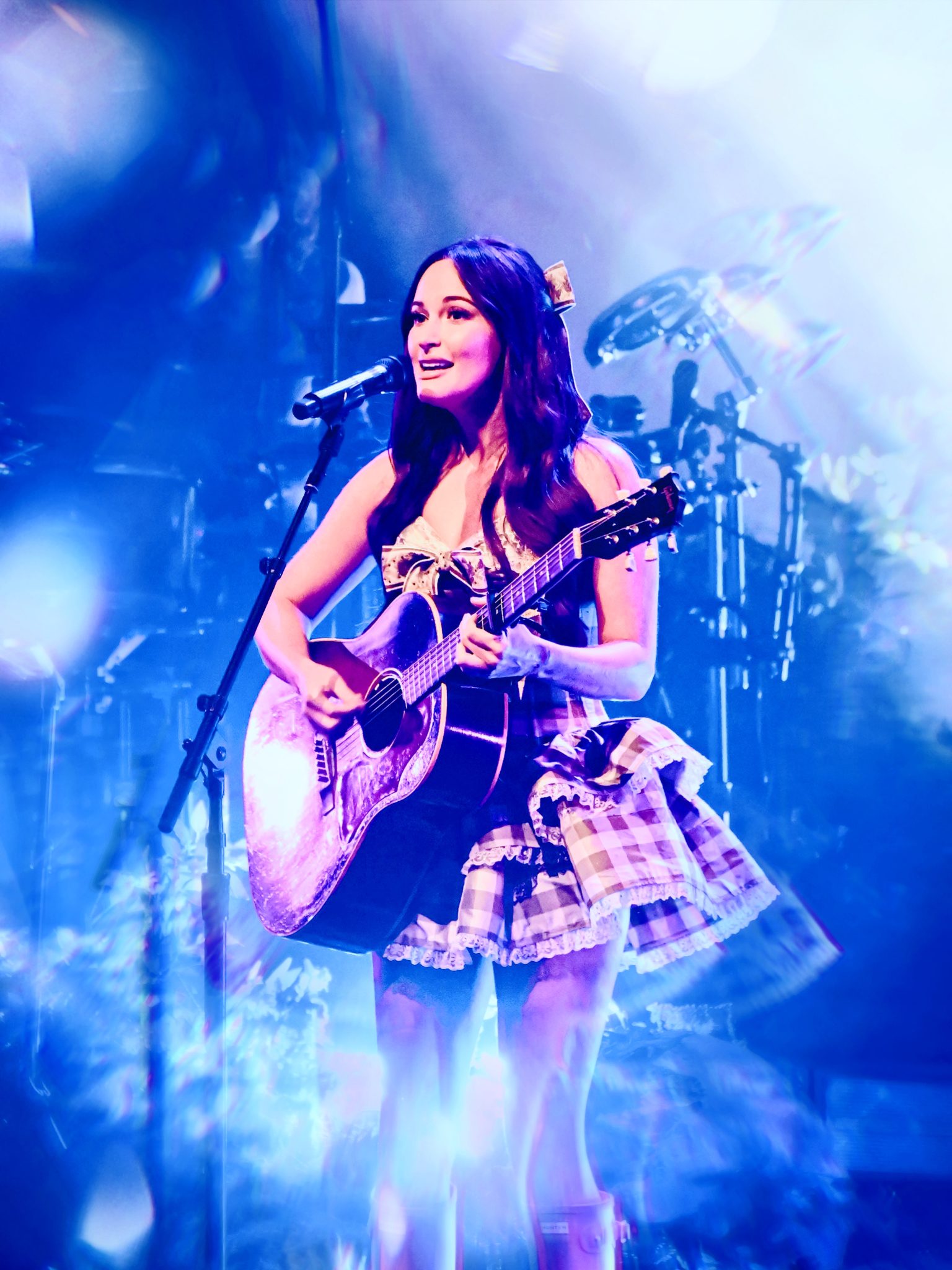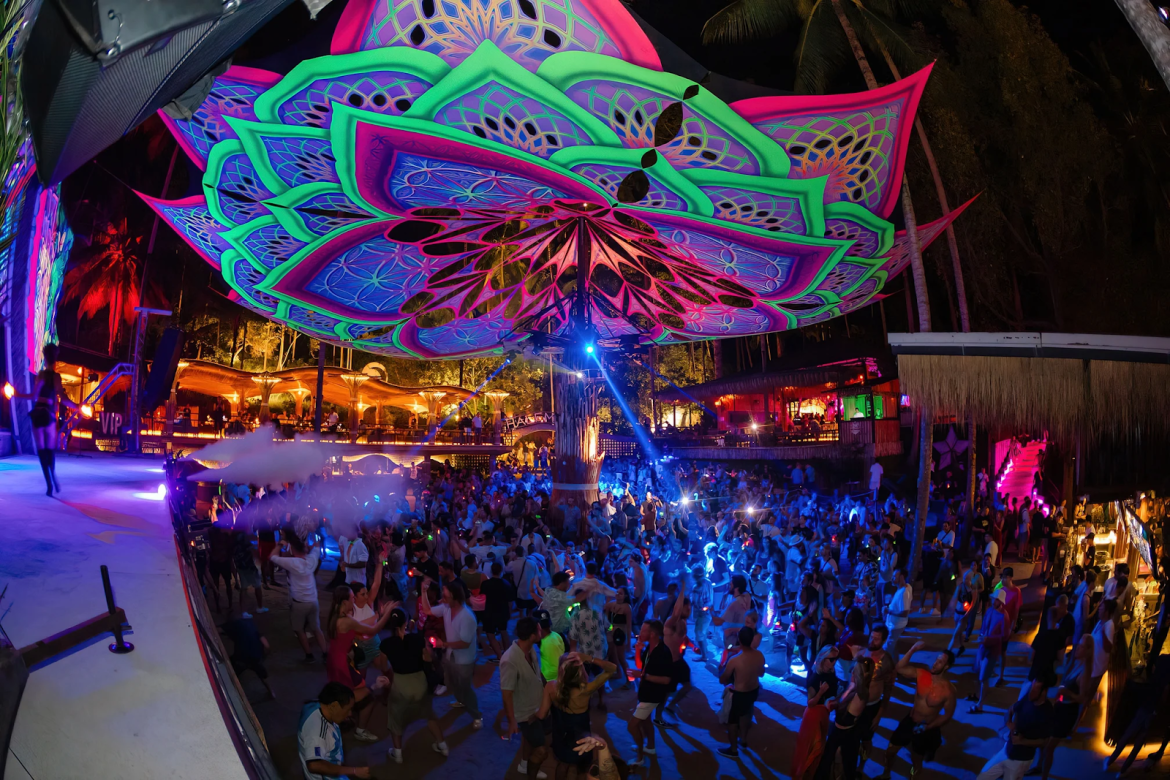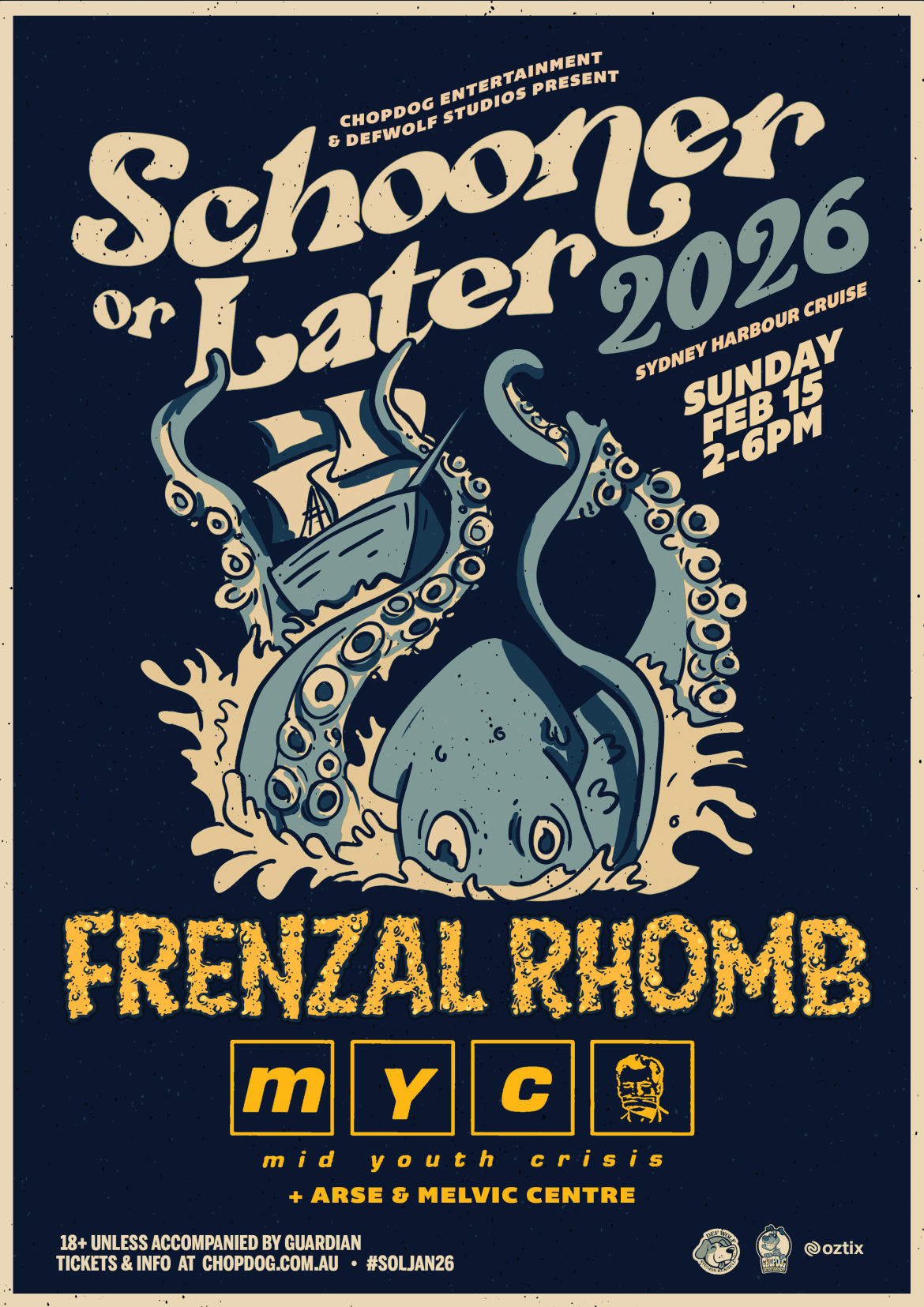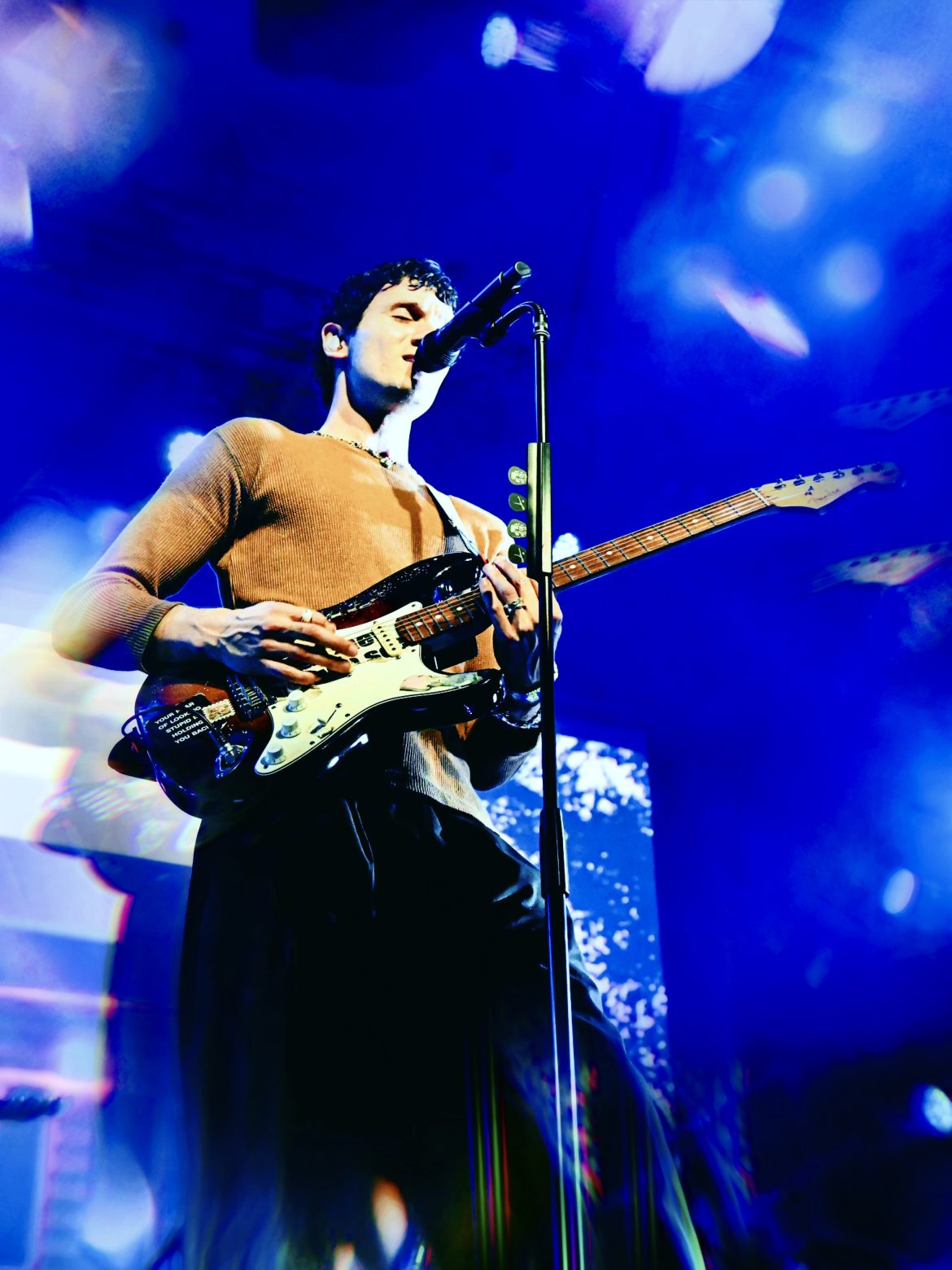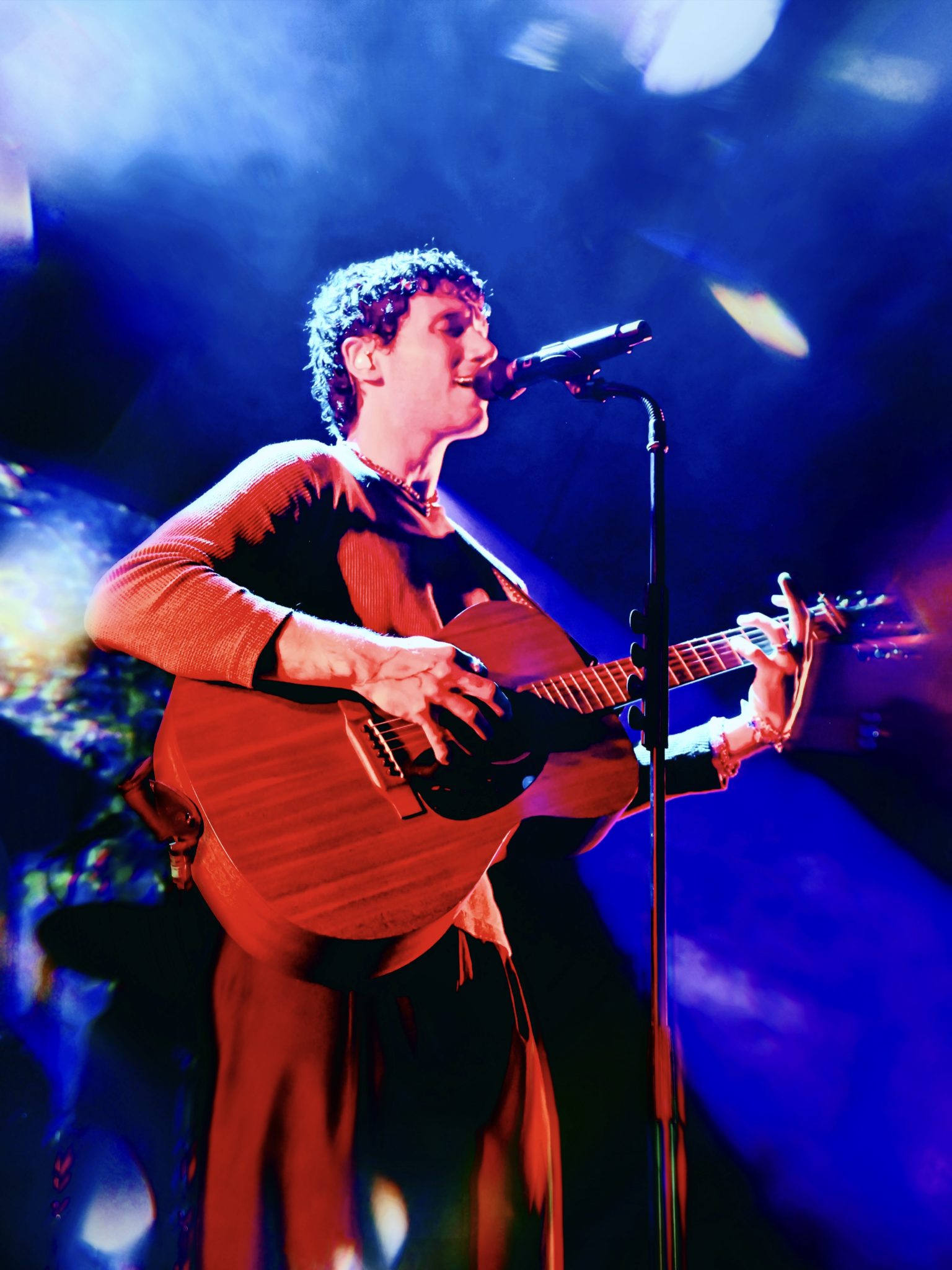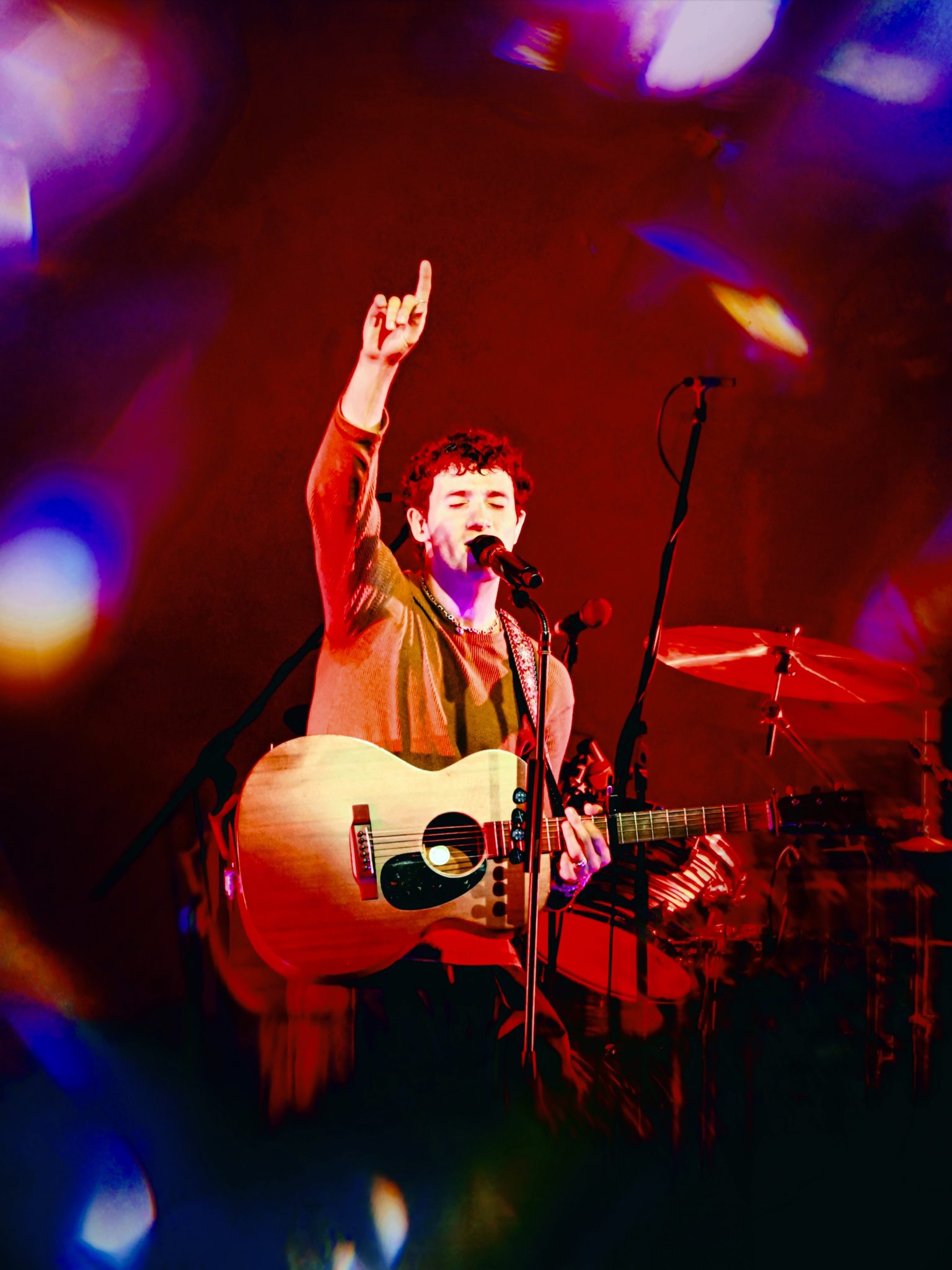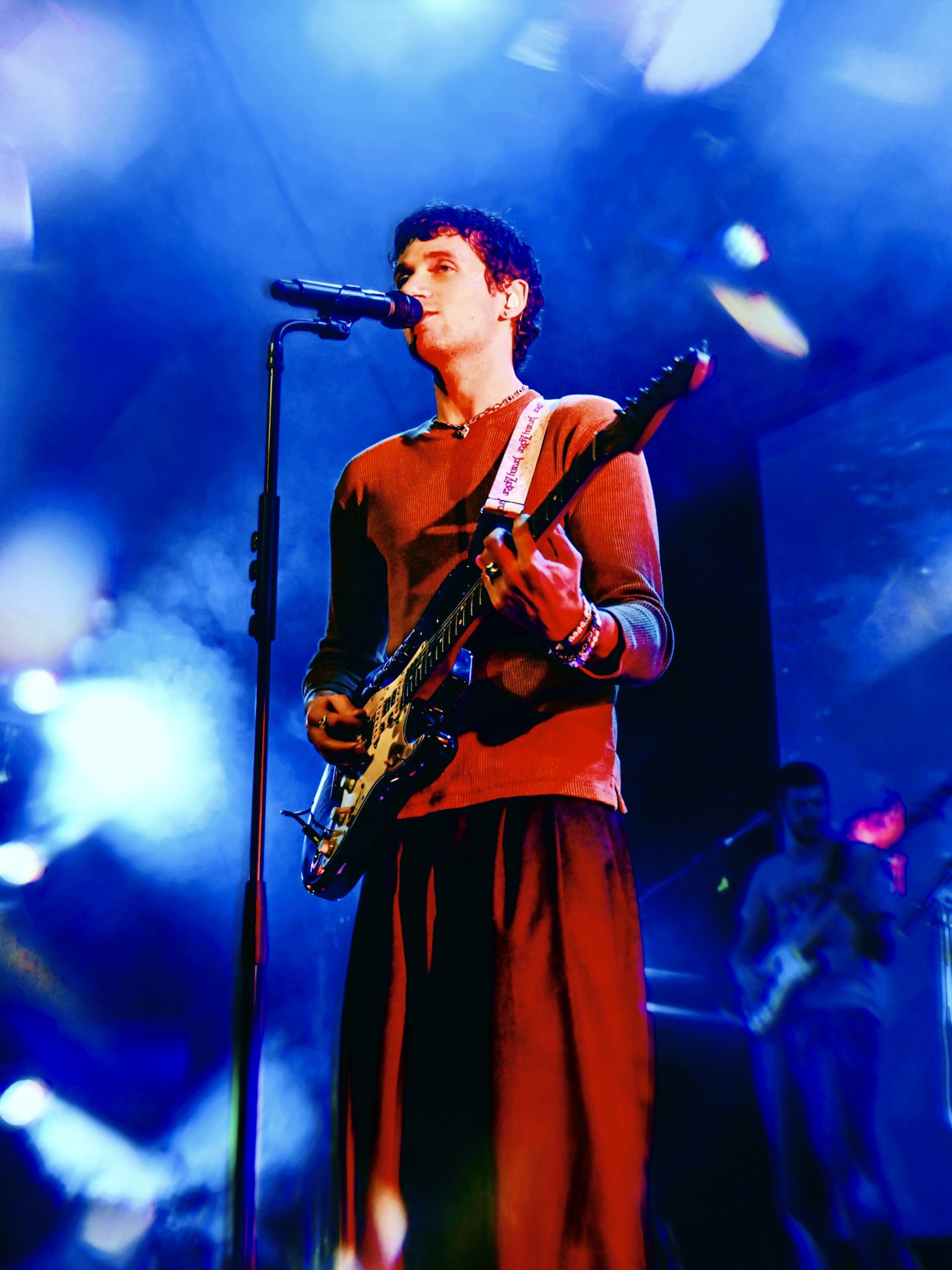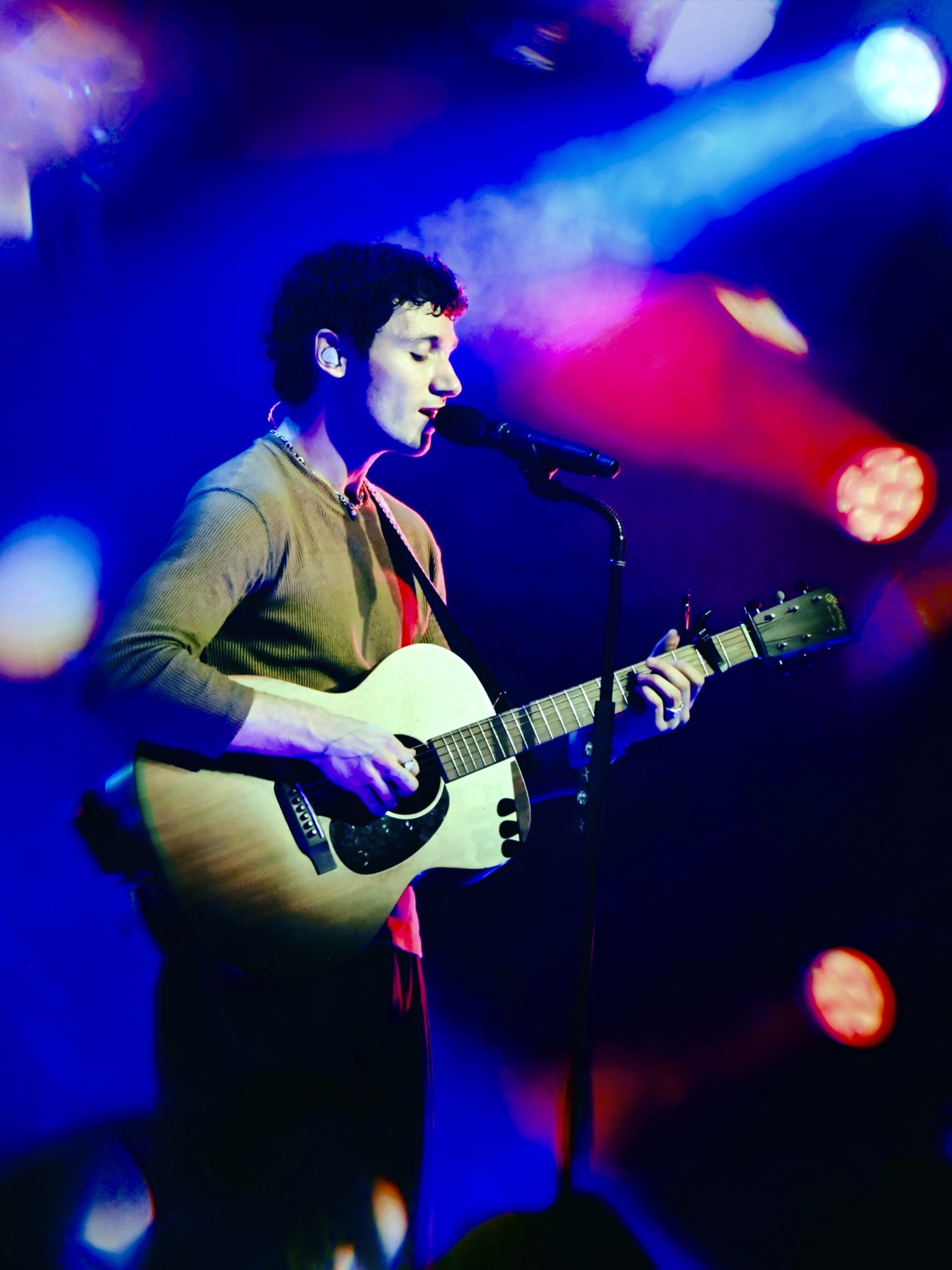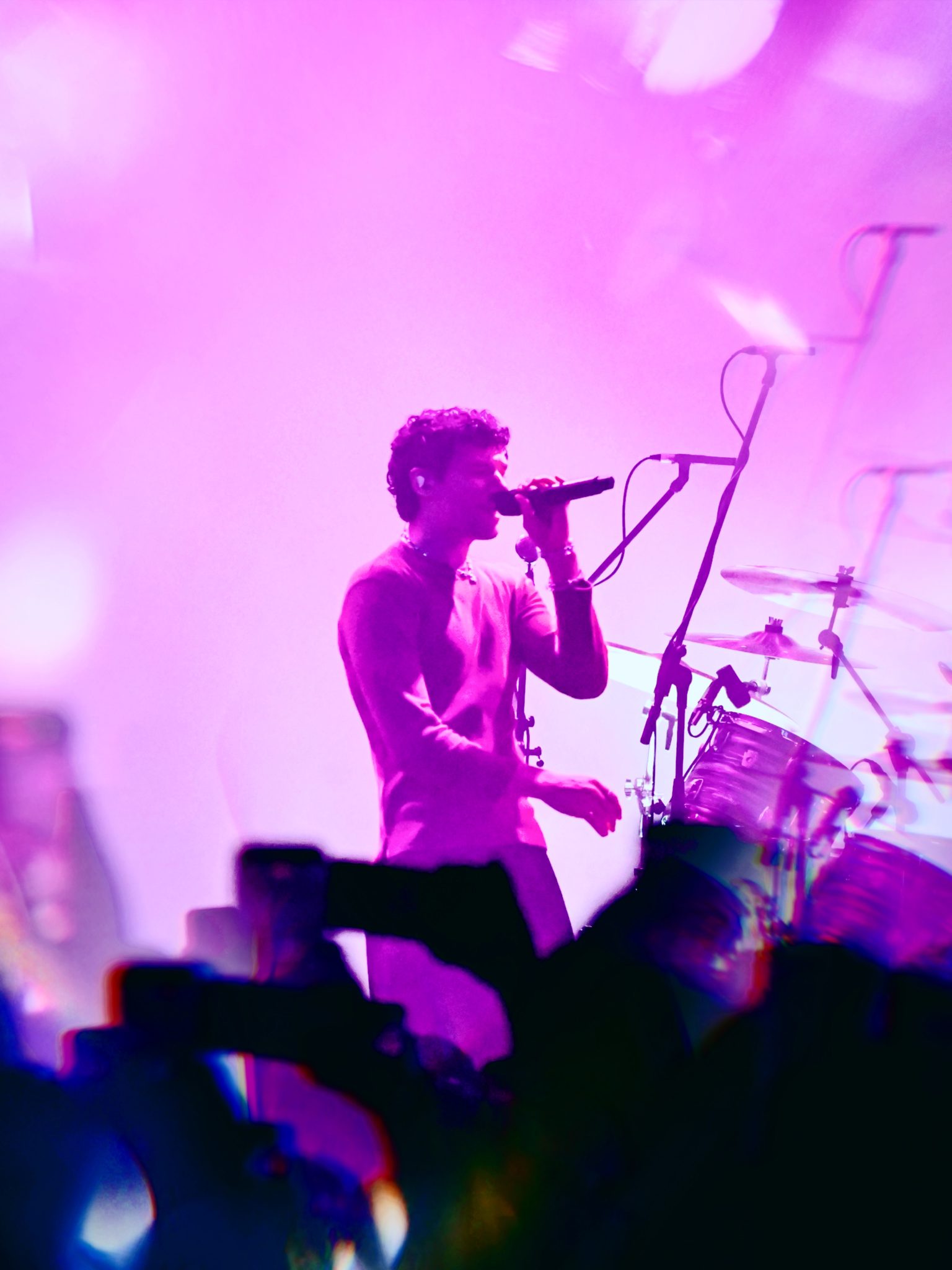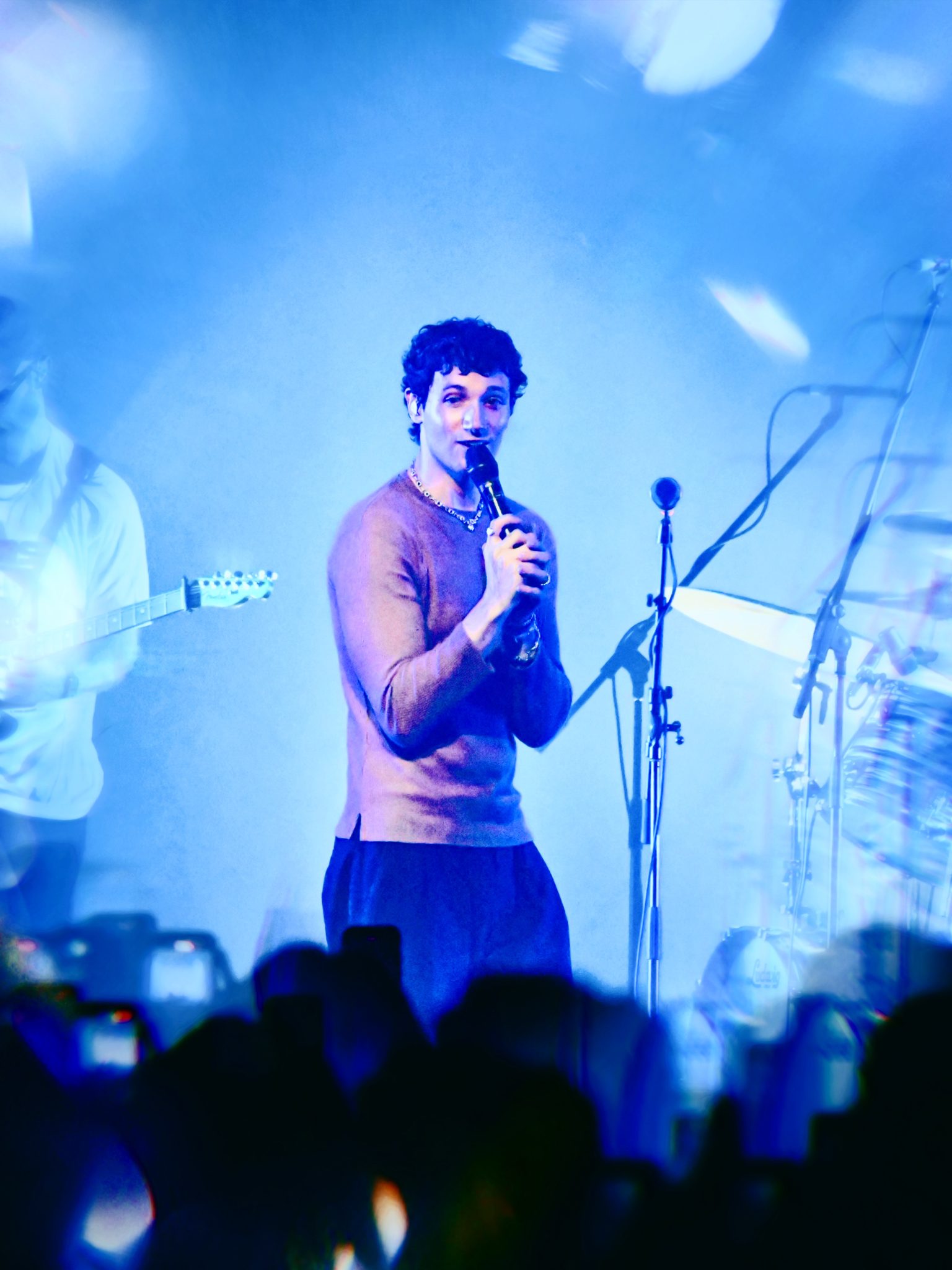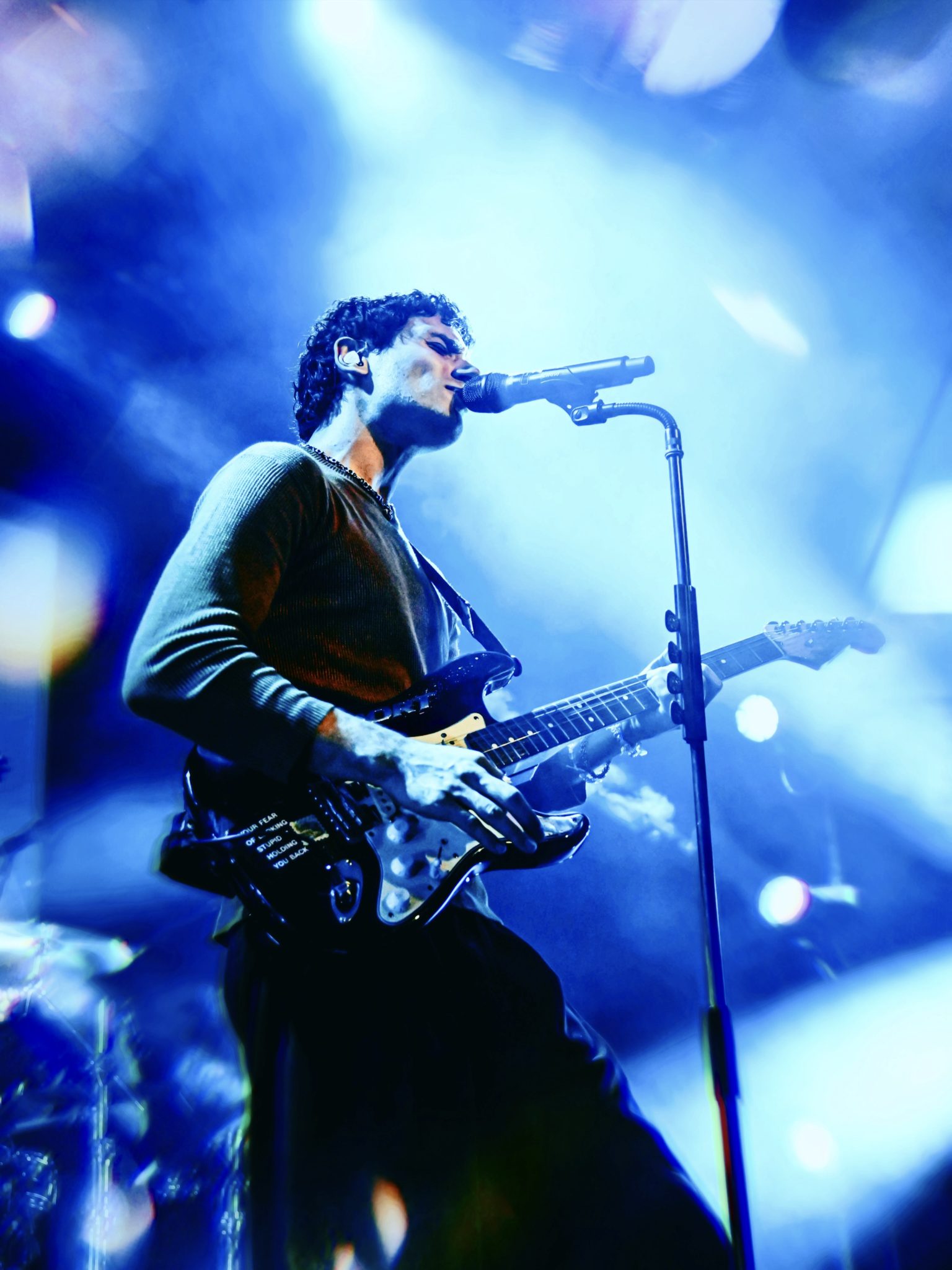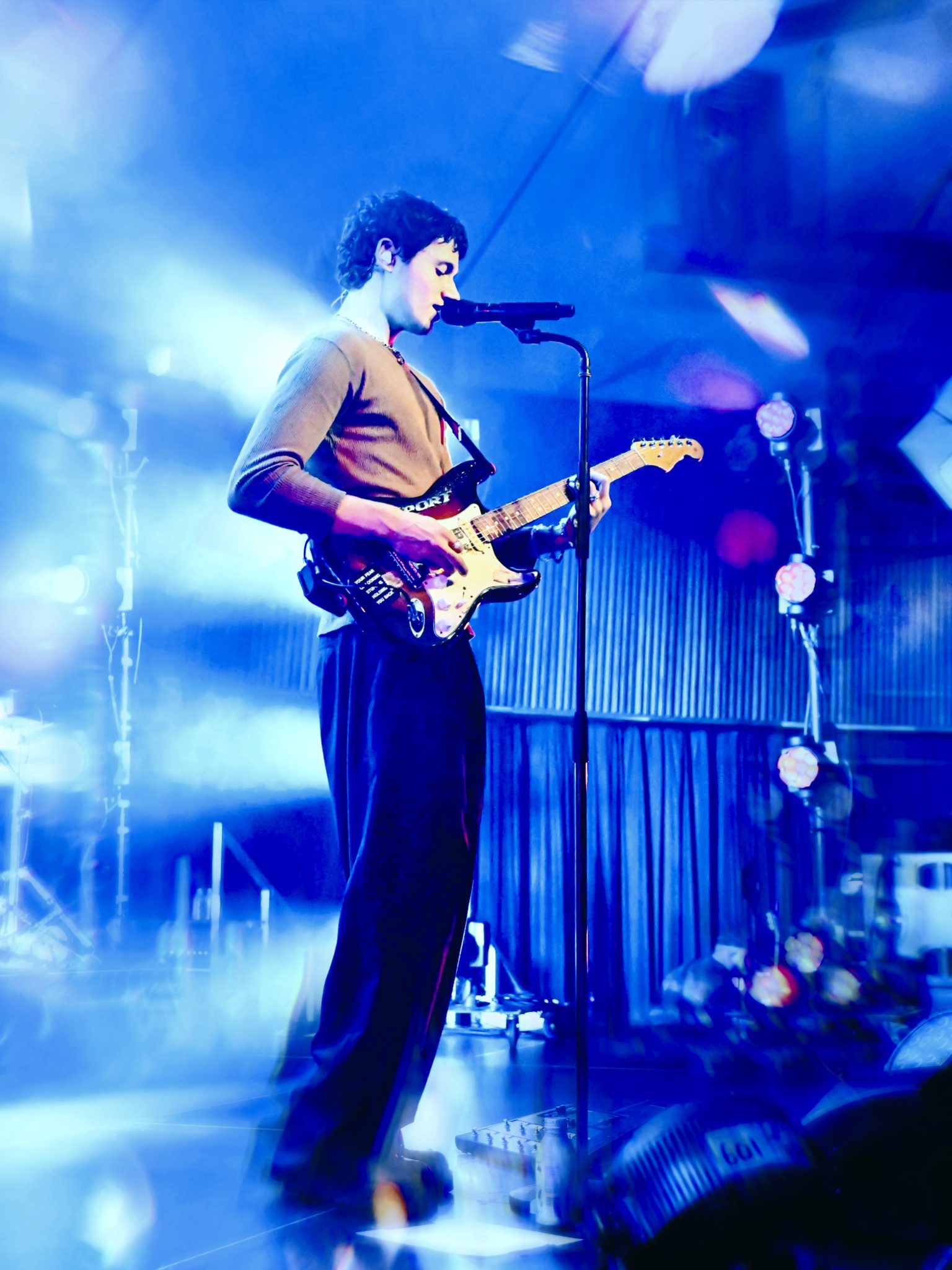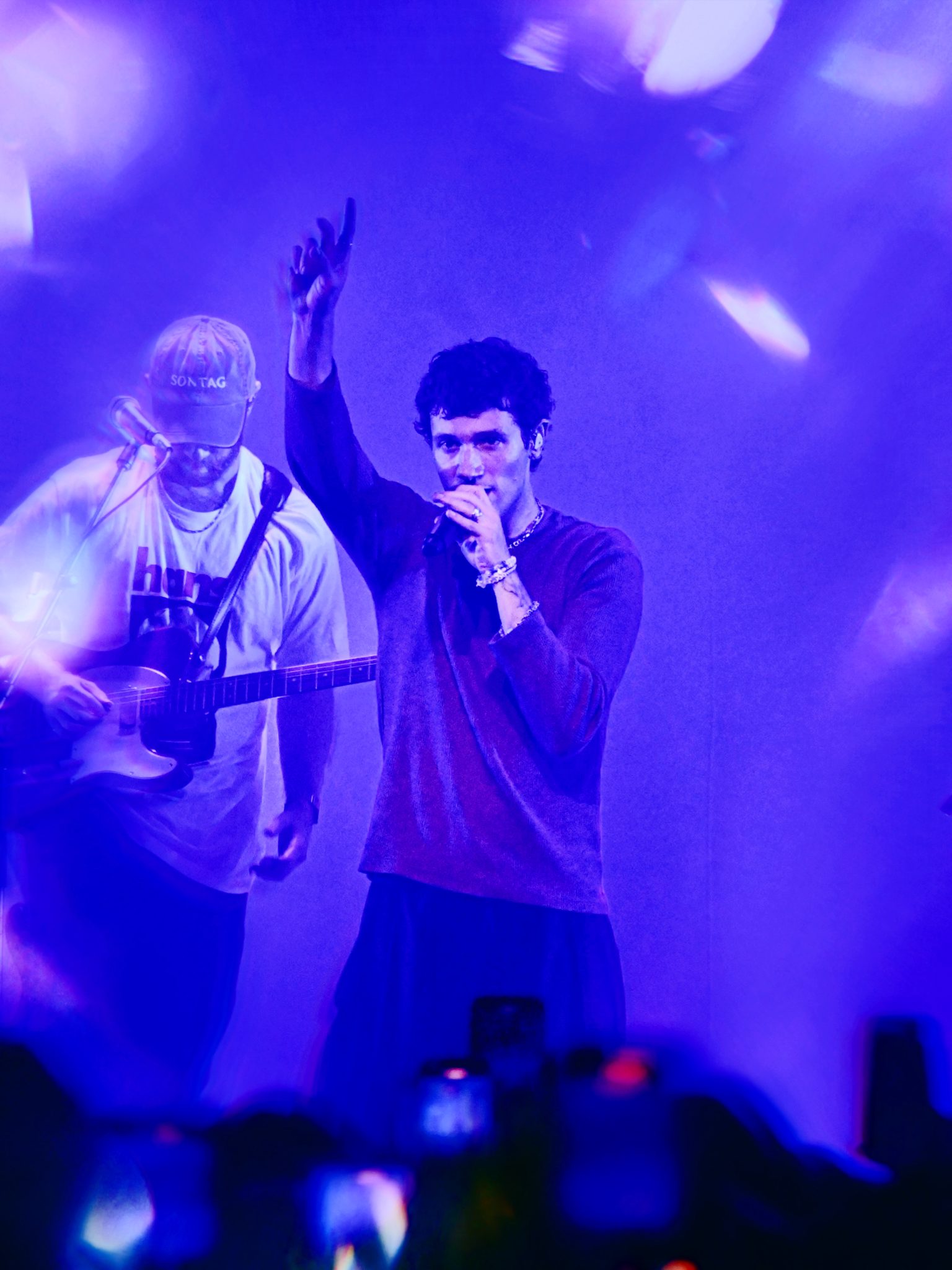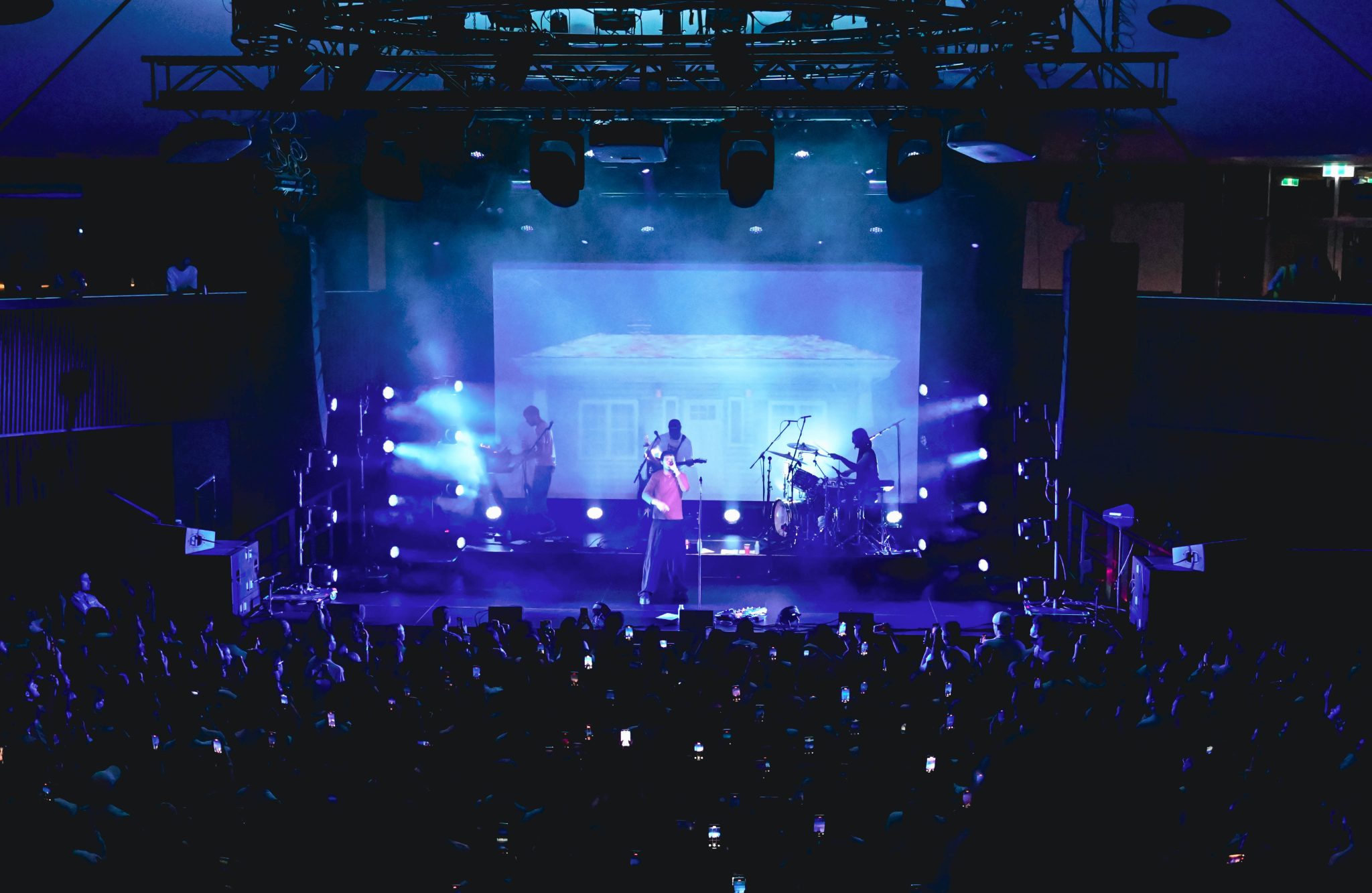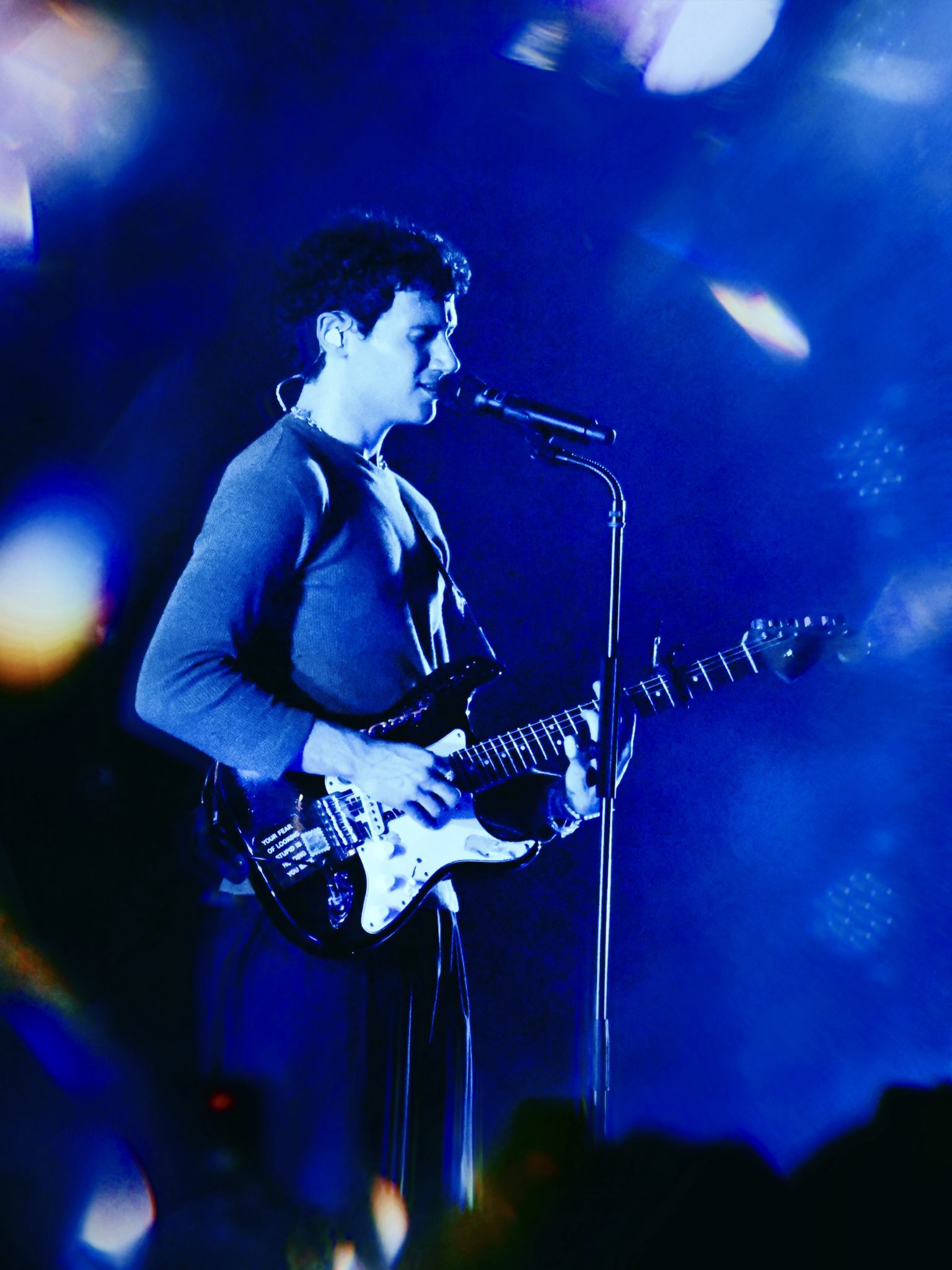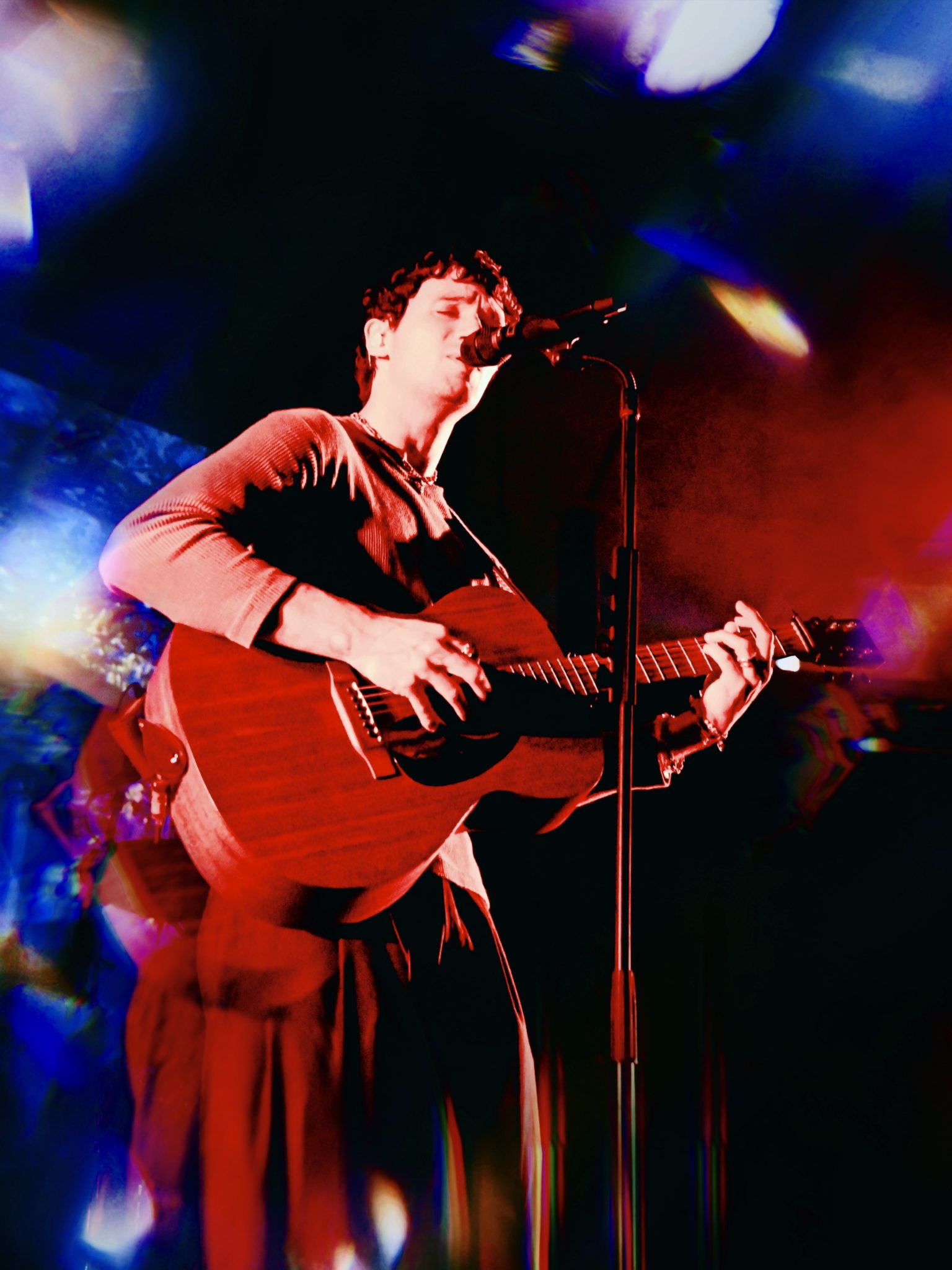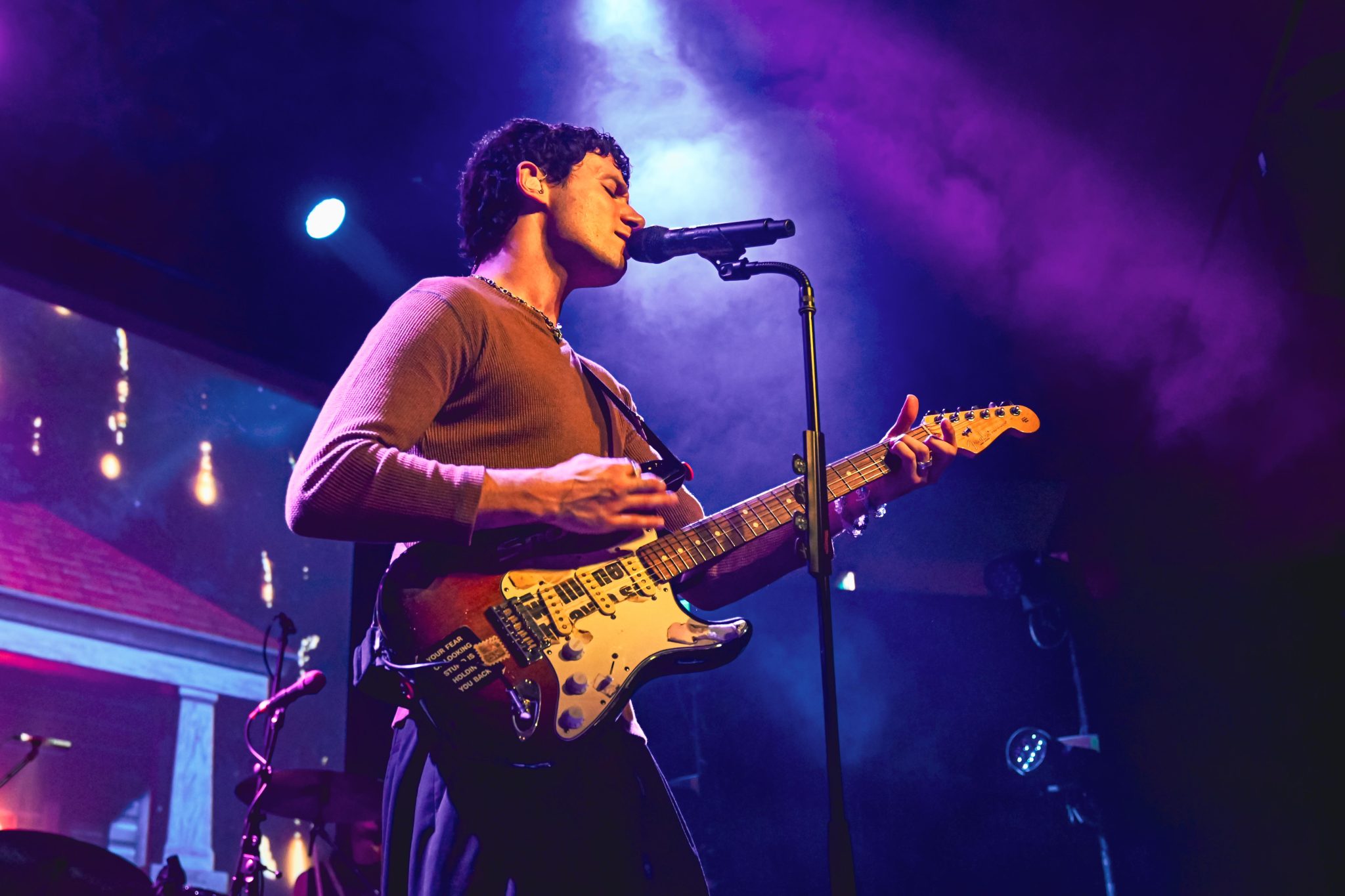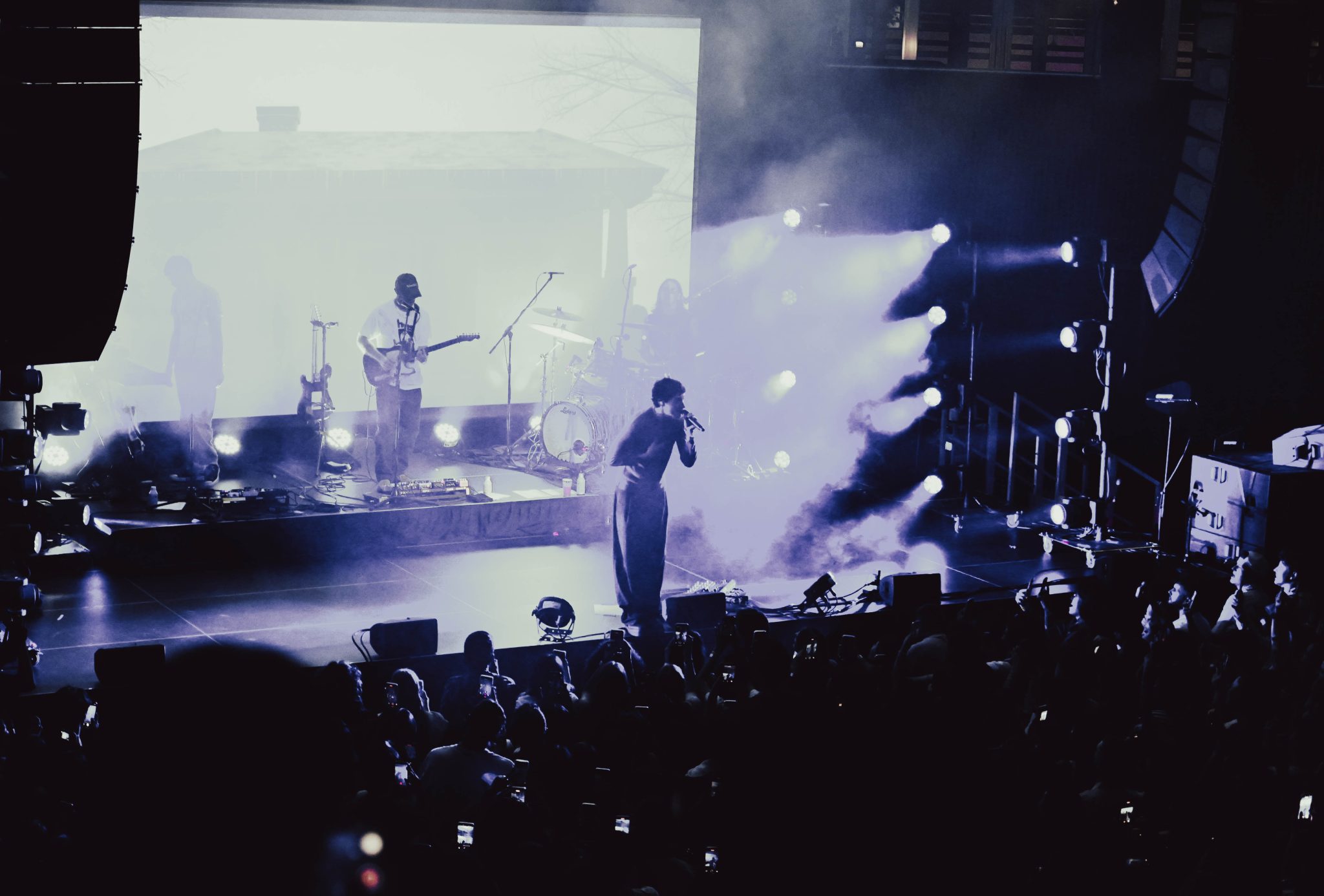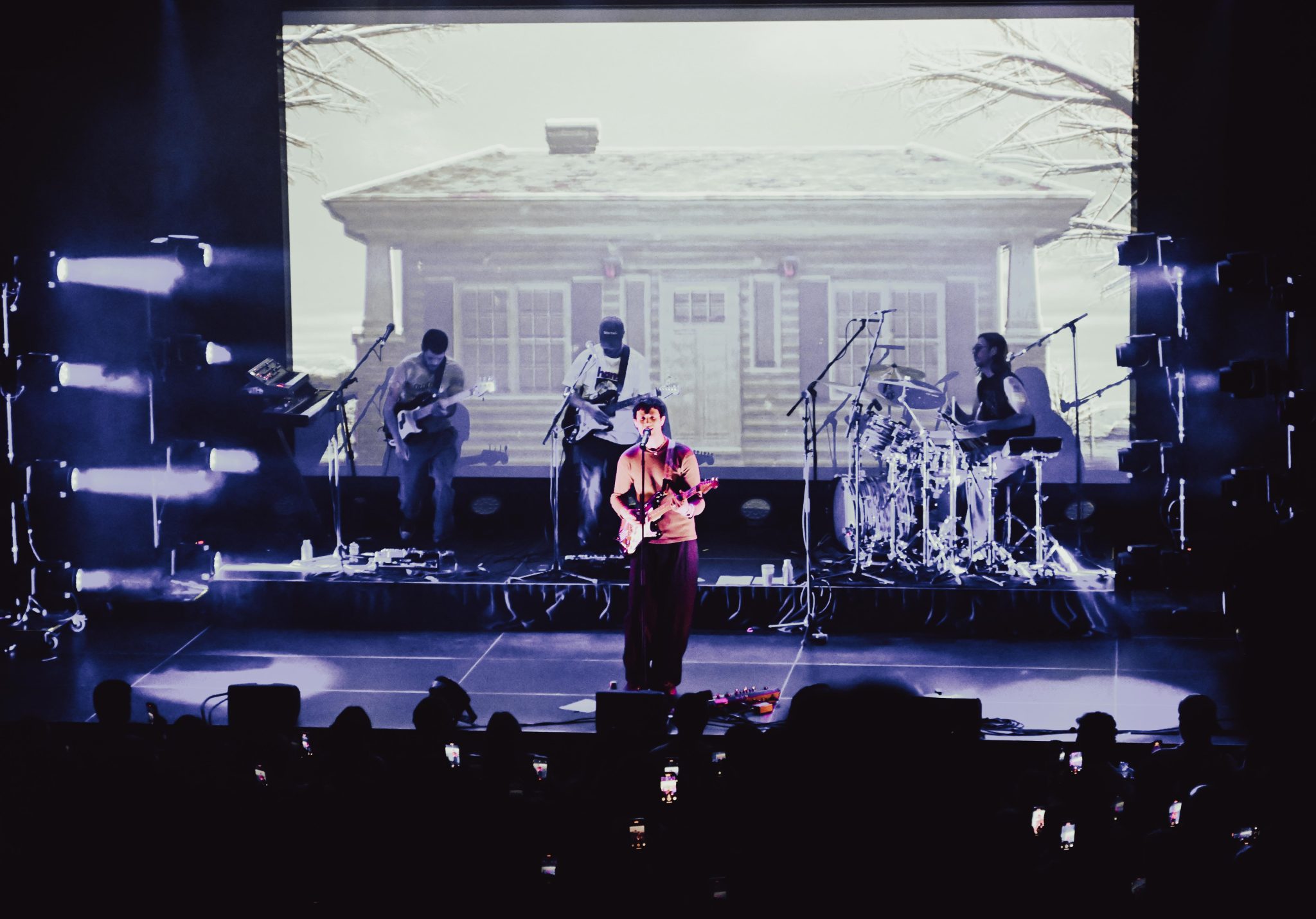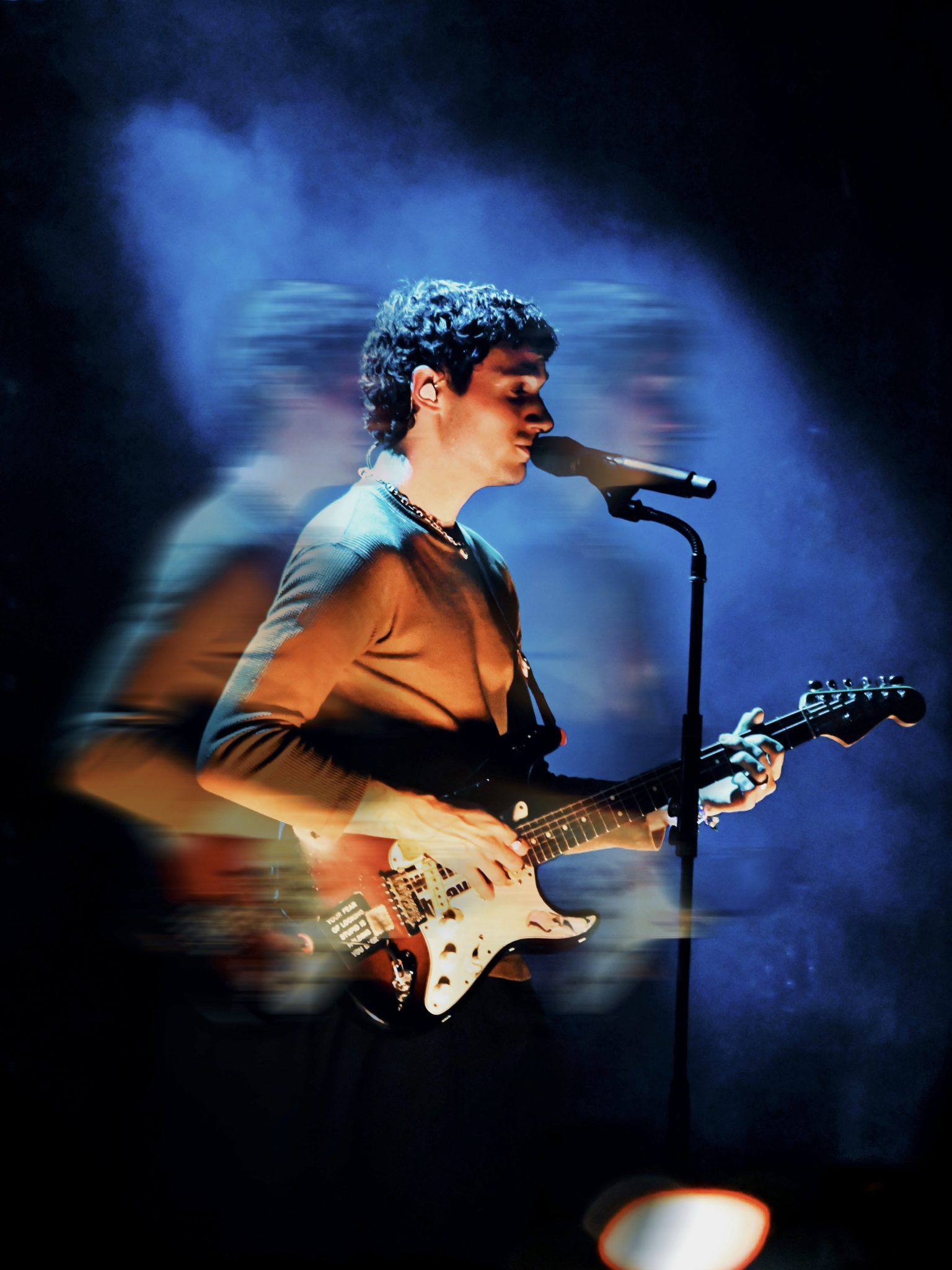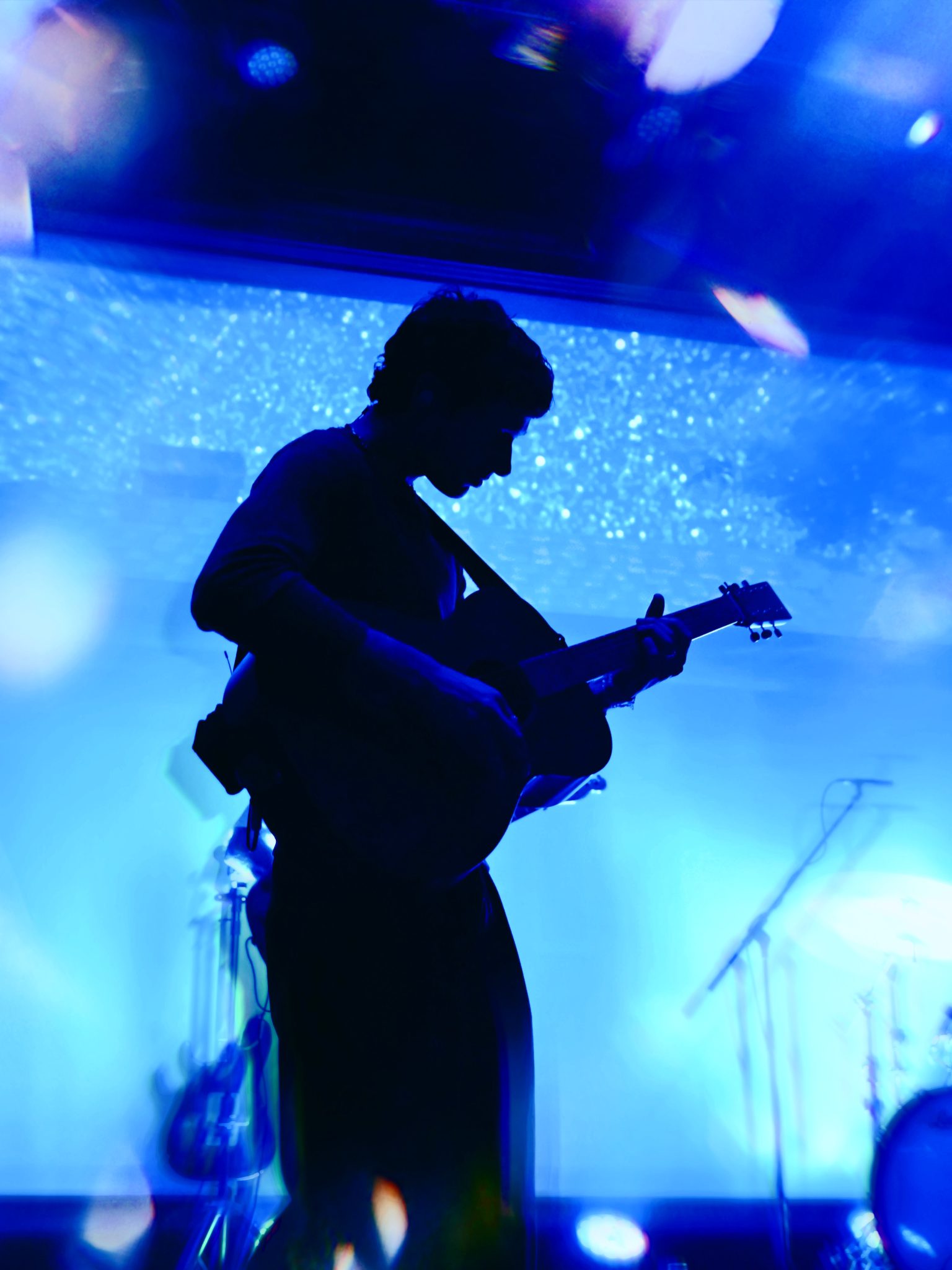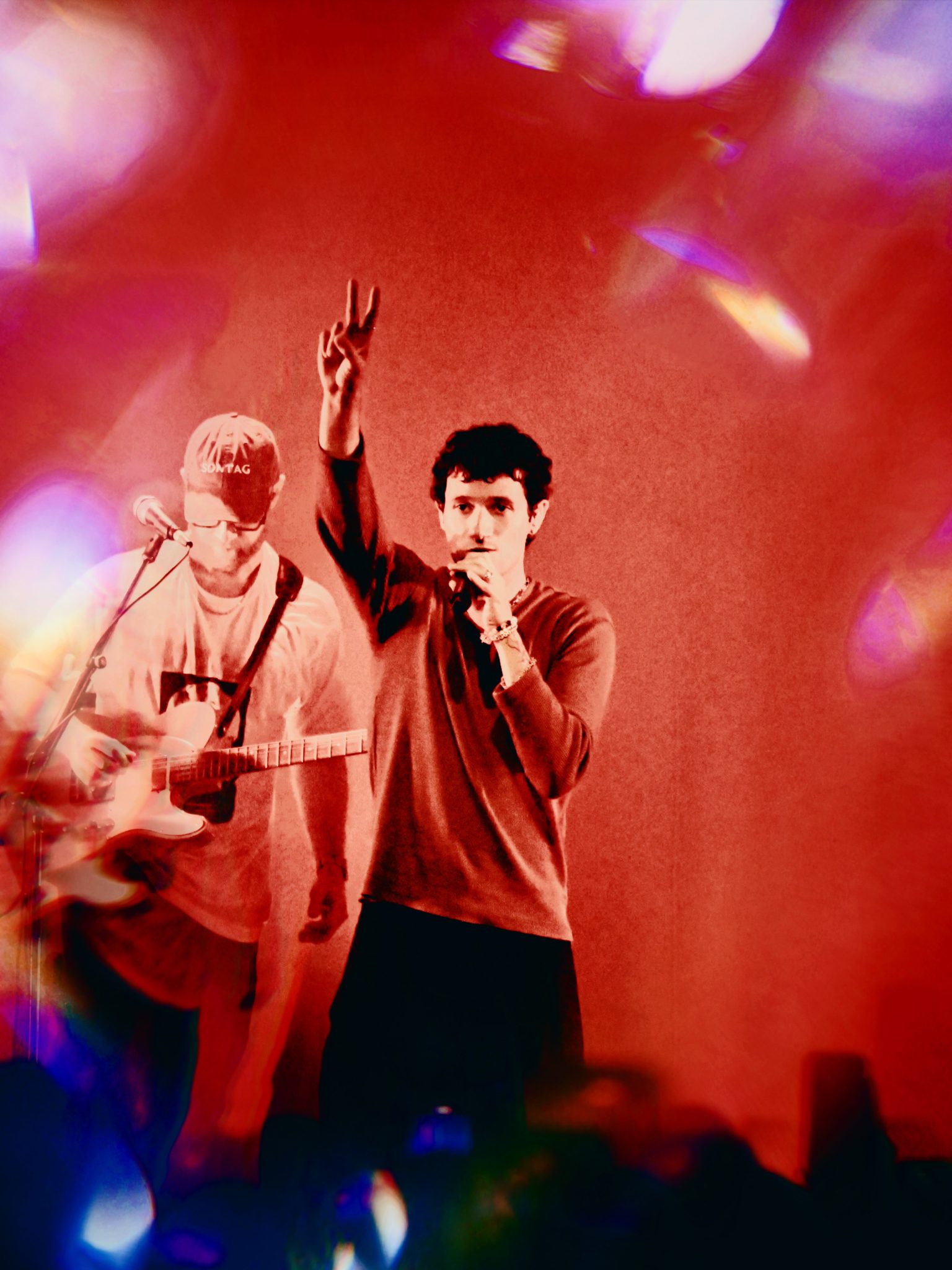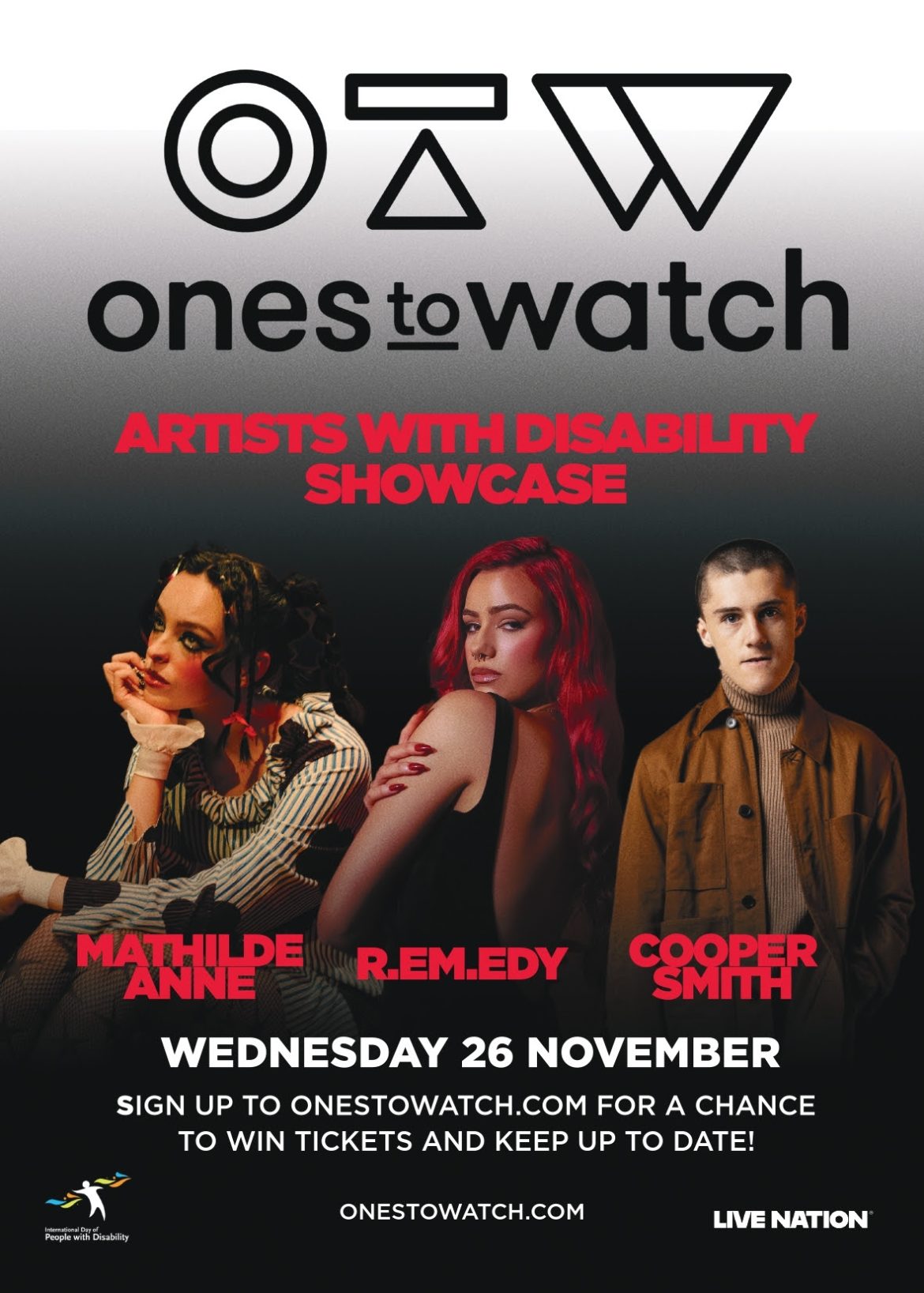“The Pages” is divided into chapters and feels like a musical journal — what inspired you to tell your story this way, and how did you decide what belonged in each chapter?
This came about after I finished writing all of the songs, and I was starting to piece them together.
I remember I showed my producer Julian the song “The Pages” and he said that’s the one! I didn’t think It was a hit at first, but then it became the lead single, and with that, the whole world for the album was created. A very confessional biography sort of style.
Then I just ran with that concept and designed all of the artwork and everything. The photo for the inner sleeve/inside of the album was a photo I took in Toronto on my little film camera of a wall in a cafe that is all books/pages. I didn’t know it at the time, but that photo was going to help me create the whole aesthetic for the album. Then, splitting it up into “Chapter 1 and 2” just made so much sense. Chapter 2 is a little bit deeper into the story, and each song builds more on the last, until you get to the final song, which really just wraps it all up.
You’ve described this album as your most personal work yet. Looking back on your first two albums, what has changed most about you as an artist — and as a person — since then?
Yes, most personal, and if I do say so myself, it’s my best work yet.
I’m definitely more set and confident in my sound, and I’m now not really “finding my sound” anymore. I know the kind of music I want to write and make. My first album has like 10 different genres (reggae, rock, pop, soul, vintage) but this album is really a strong folk/rock/Americana sound, that is undeniably me!
Also, I am just more confident in myself and my musical abilities. I have let go of a lot of fears around being too much or being judged for my weirdness, and I’ve simply embraced it. Now I’m posting more authentic content and being more outwardly on stage because let’s face it, people don’t remember boring. There are too many artists playing it safe. Let your freak flag fly, I say!
You’ve said these songs capture resilience and turning difficult moments into beauty. Can you share one song that was particularly cathartic or transformative to write?
“Amber” – for sure. I really tapped into something deeper there and felt like, “Damn, people are really going to hear me!”
This song captures my optimistic nature. I like to radiate genuine energy instead of getting caught up in negativity.
In creating it, I wanted people to truly hear that I won’t seep to a level of negativity and I’m not afraid to say, “Yeah, I’m happy, and bubbly, and that’s just my personality. This is me.”
You worked with Julian Bueckert, Ian Docherty, and Jim Bryson on this album. How did each producer influence the sound, and what was most exciting about those collaborations?
Yes, it was so cool to work with many different producers on this record.
It started with 3 songs with Ian that were initially intended for a different album. “To Heal” was the last song we worked on and I knew it was special enough to be part of “The Pages”.
Then I worked with Jim and we produced the Christmas song “Evergreen”. “Big Star” was a track that stuck with him, so we also recorded that one.
I was at this point where I had a bunch of songs that could form an album but wasn’t sure exactly sure about my next steps. Then Julian offered to produce the rest of the record and it all fell into place.
Each producer brought something unique to their contributions, but my songwriting really holds everything together nicely.
You’ve played over 500 shows, including NXNE and Folk Alliance International. How have these performances shaped your connection with audiences, and how have your live shows for “The Pages” so far felt different from past tours?
Performing is really sacred for me, I get to tap into my younger self, performing is something I’ve done since I was a child, so I feel very at home on stage.
“The Pages” touring era has allowed me to truly step into my power and let go of the fear of being perhaps “too much” – too dramatic, intense or passionate. I’ve finally allowed myself to be that person I always wanted to, and show people that you can be that full unafraid version of yourself.
You’ve traveled across Canada, Ireland, and Los Angeles to make music. How have those places and their music scenes influenced the writing and energy of this record?
Yes! All of these places have definitely shaped my sound.
The place to shape the most of this record however, was Nashville! I spent a few weeks there last September, I wrote “The Pages” “Big Star” “Your Muse” there, and I found this really gritty, country, Americana sound there, that also is reflected in a lot of the record, especially the guitar. I worked with Canadian/Nashville based guitarist Harry Bartlett, and his sound really came through.
Also, a lot of my time in Toronto is reflected in these songs. I wrote “Like A Rock” and “To Heal” from my little apartment in Toronto, and cried when I wrote both of them because it felt so good and powerful. The majority of the other songs were written from my little mountain home in British Columbia.
Your sound blends folk, Americana, and vintage rock with influences from Sheryl Crow to Tom Petty. How do you balance honoring those influences while staying uniquely “Maddisun”?
Those inspirations are always there in the background, and they really come out no matter what, just naturally and subconsciously, because I was raised on rock ‘n’ roll and classic sounds.
I’ve been writing since I was a child – I used to sit my relatives down and “improvise” songs when I was 7 years old, just writing from the heart.
This album feels like tapping into that again. I let my inner child kinda go wild, but I kept going back to the great musicians and songwriters I am inspired by to create structure and hooks.
You’ve landed a sync deal and brand endorsements with Aria Guitars, Godin, and Yamaha. How do partnerships like these impact your creative journey and open new doors for you?
Yes, so cool and exciting! Really it gave me a lot of recognition, to be like “yeah I make cool content, and show up authentically online, so why shouldn’t I be represented by these amazing brands” it’s so fulfilling to know they want to work with me.
If “The Pages” is the story of who you are now, where do you see the next chapter taking you — musically, personally, or even geographically?
I think I need to go away and write my next project. I’ve already started writing it.
A lot of the writing has happened with Julian too. He’s a powerhouse songwriter, and we’re creating some magic. I think my new songs will feel more lived in, more organic, maybe even more stripped back and acoustic, like lived in blue jeans…. relaxed.
I want to go to Mexico or somewhere in California and write the album. When my life is so chaotic with touring and working all the time, I have a hard time staying up on writing, so I need to escape and dedicate specific time to it.
I look forward to this time… stay tuned.
